SPECIAL TOPIC—Centennial ferroelectricity: New materials and applications

2020, 69 (21): 216801.
doi: 10.7498/aps.69.20201718
Abstract +
In this paper, the recent progress of ferroelectric topologies is briefly reviewed with the emphasis on the important role of state-of-the-art aberration-corrected transmission electron microscopy in revealing the topological features in nanoscale ferroelectric materials. By identifying the ion displacement at a sub-angström level, the corresponding polarization distribution can be determined which uncovers the characteristics of topological structures. The formation mechanisms of ferroelectric topological structures and their evolutions under external fields are summarized from the perspective of strain, screening, and external fields for two prototypical ferroelectric materials, PbTiO3 and BiFeO3. For the PbTiO3, its topological structures such as flux-closures, vortices, bubbles, skyrmions, and merons can be well demonstrated in a thickness-strain-screening phase diagram, which could be a guideline for better understanding the topological structures and also for the future exploration. For BiFeO3, its topological structures reported are classified as two categories: one is the unscreened topological structure such as vortices and the other is the screened topological structure (center-type domains). Finally, we present the prospects for the future development of the ferroelectric topologies.
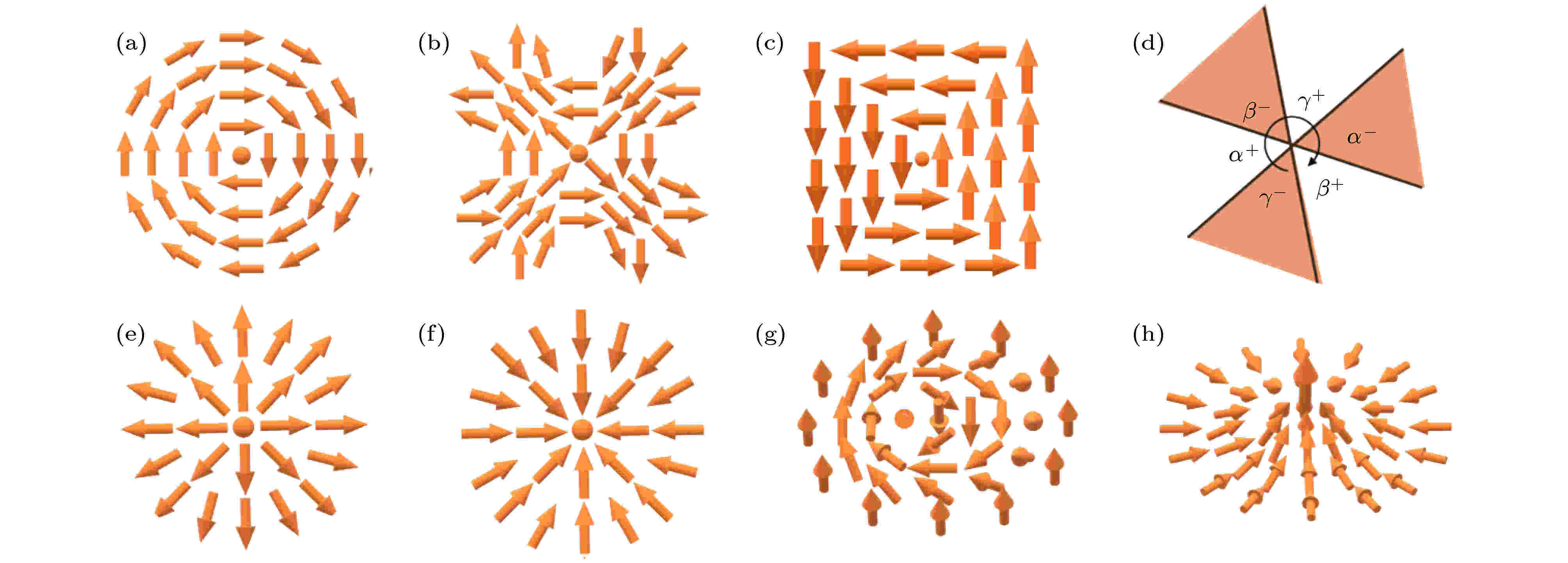
2020, 69 (21): 217501.
doi: 10.7498/aps.69.20201063
Abstract +
Exotic ferroelectric topological states (such as vortex state) have received intensive attention in the past decade, creating a new area for exploring the emerging physical phenomena and functionalities, as well as new applications (such as memory). In recent years, a series of discoveries in novel topological states, such as vortex, central domain, skyrmion and meron states, has inspired an upsurge of research interests. Moreover, the effort to manipulate such a topological domain structure hints the possibilities for the local, deterministic control of order parameters so that the static interface conductivity can be successfully controlled at topologically protected domain walls. These encouraging discoveries create a new avenue to the fertile emerging physic phenomena, and offer new possibilities for developing potential high-performance materials and new nano-electronic devices based on these exotic states. In the past decade, this field has developed rapidly and become a hot research topic in ferroelectrics. In this paper, we review the recent progress in the field of exotic topological state in nanoferroelectrics, and discuss some existing problems and potential directions.

2020, 69 (21): 217502.
doi: 10.7498/aps.69.20201193
Abstract +
Magnetoelectricity is an emerging topic and a frontier issue of the field of ferroelectricity. Multiferroics containing more than one ferroic order is an ideal system to pursuit intrinsic and robust magnetoelectric coupling, which holds rich physics and great potential applications. As a branch of the correlated electron family, multiferroic also has multiple degrees of freedom, including the charge, spin, orbital, and lattice. Among them, the charge degree of freedom has been mostly overlooked in the past researches and actually it may play an important role in magnetoelectricity. In this topical review, the charge-mediated magnetoelectricity is introduced, including the ferroelectric field effect in heterostructures and the charge ordering in single-phase multiferroics. The physical mechanisms will be revealed, together with several examples we given in recent years. We hope that this topical review can provide a reference for the researches in this vigorous filed.

2020, 69 (21): 217701.
doi: 10.7498/aps.69.20201006
Abstract +
Dielectric capacitors are widely used in modern electronic systems and power systems because of their advantages of fast charge discharge speed and high-power density. Nowadays, the new products related to renewable energy, such as hybrid electric vehicles, grid connected photovoltaic power generation and wind turbines, downhole oil, gas exploration, etc., put forward higher requirements for the energy storage capabilities of dielectric capacitors in elevated-temperature. In this review, the research progress of the polymer-based dielectrics for high-temperature capacitor energy storage in recent years is systematically reviewed to offer benefits for further study. Firstly, the physical mechanism of energy storage of dielectric materials is introduced, and several conduction mechanisms of dielectric materials are summarized and analyzed; then, several strategies to improve the high-temperature energy storage performance of polymer dielectrics are presented, including the nanocomposite modification and design of layer-structured polymer composites, and the molecular structure design and chemical crosslinking treatment of dielectric polymer. Finally the scientific and technological problems in the application of dielectric polymer and their nanocomposites for high-temperature capacitor energy storage are discussed, and a possible research direction in the future is prospected.
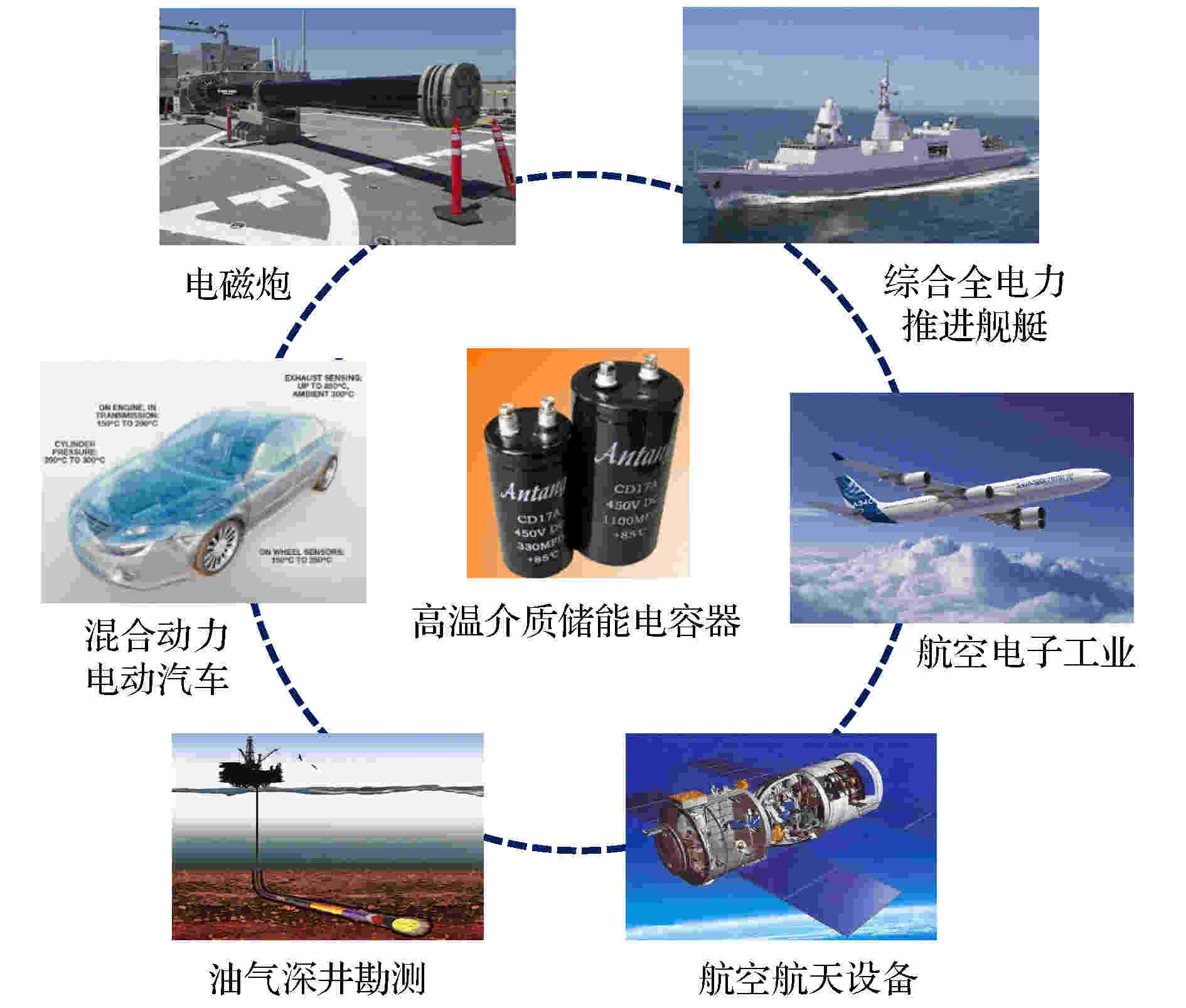
2020, 69 (21): 217702.
doi: 10.7498/aps.69.20201031
Abstract +
With the development of power electronic device equipment towards miniaturization and high performance, the dielectric materials with high energy storage density, high charge and discharge efficiency, easy processing and molding, and stable performance are urgently needed. At present, Barium titanate-based dielectric ceramics have a high dielectric constant, but low breakdown field strength and poor flexibility. Polymer-based dielectric materials have ultra-high functional density, ultra-fast charge and discharge response time, good flexibility, high breakdown field strength, light weight and other advantages, but low dielectric constant and low polarization strength. Their energy storage density is low, which limits the power capacitor component size and application scope. In order to obtain material with high energy storage performance, it was proposed to add high dielectric constant inorganic ceramic fillers to the polymer through a composite method to improve the energy storage performance of the material. The interface plays a vital role in the performance of the composite material. In this article, we review the latest research advance in the interface design and control of barium titanate/polyvinylidene fluoride composite dielectric materials. The effects of interface modification methods such as organic surface modification, inorganic functionalization and organic-inorganic synergistic modification on the polarization and energy storage performance of composite materials are summarized. The existing interface models and theoretical research methods are discussed, and the existing challenges and practical limitations, and the future research directions are prospected.

2020, 69 (21): 217703.
doi: 10.7498/aps.69.20200980
Abstract +
As an important member of the dielectric family, ferroelectric materials are known for their various physical properties and have been attracted considerable attention from both scientific respect and technology respect. Piezoelectricity is one of the most important properties of ferroelectrics, which has been widely used in many devices for the conversion between electric energy and mechanical energy. For example, the main piezoelectric elements of underwater acoustic transducers, medical imaging systems, piezoelectric actuators, etc., are all ferroelectrics. In this paper, the history of the piezoelectric effect in lead-based perovskite ferroelectrics is introduced, and the relationship among the microstructure, the state of polarization and the piezoelectricity is discussed. In addition, we introduce some important factors for optimizing the piezoelectricity of ferroelectrics, such as morphotropic phase boundary, soft doping, polarization rotation, local structural heterogeneity, etc. It is expected that this paper could shed light on the future design of ferroelectric materials with various functionalities.
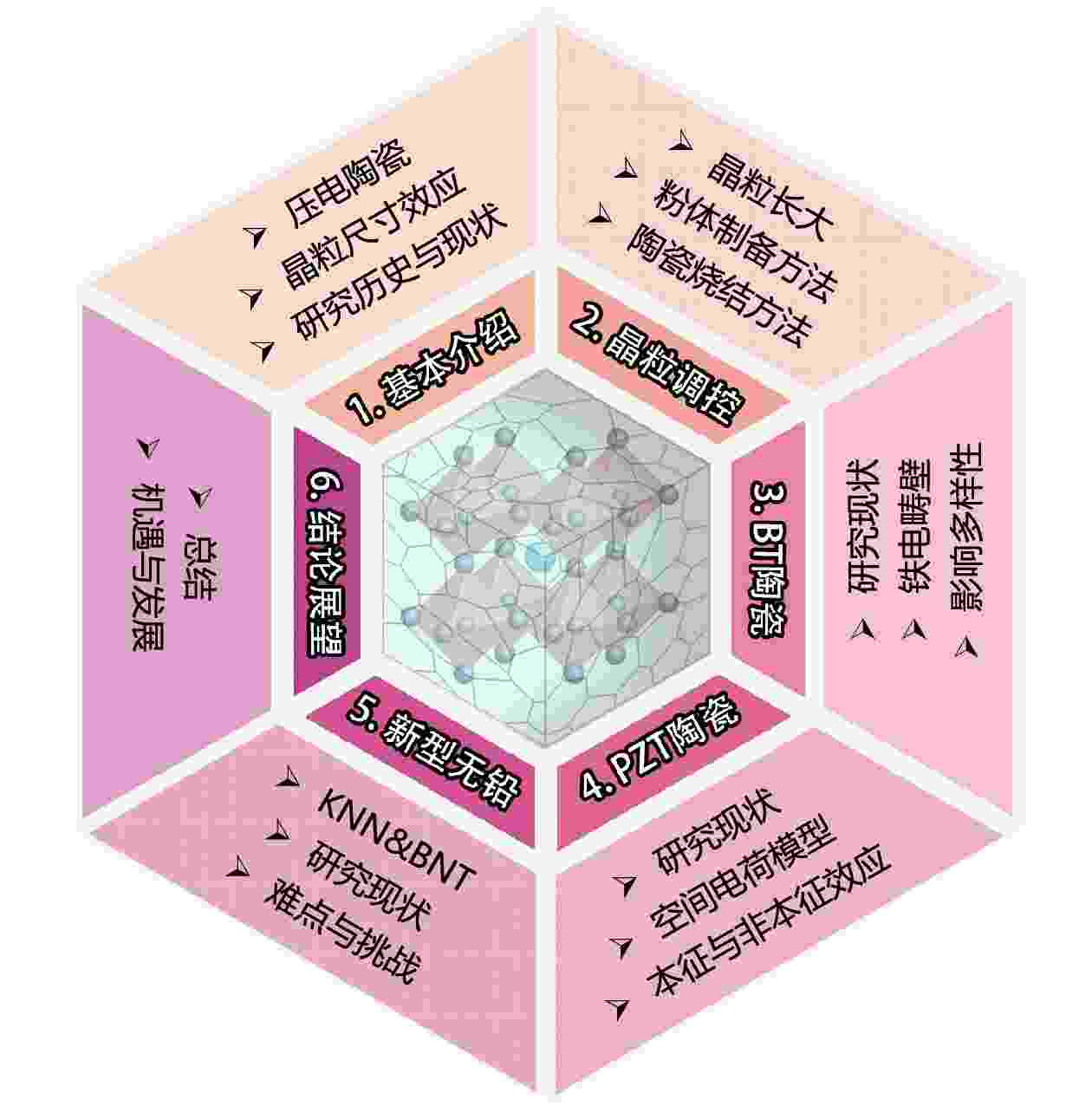
2020, 69 (21): 217704.
doi: 10.7498/aps.69.20201079
Abstract +
Piezoelectric ceramics is a versatile functional material that can realize interconversion between electrical energy and mechanical energy. As the electrical properties of piezoelectric ceramics are extremely sensitive to the grain size variation, the investigation of grain size effect has attracted much attention. In this paper, the recent research progress of the grain size effect on perovskite piezoelectric ceramics, including barium titanate (BT), lead zirconate titanate (PZT), potassium sodium niobate (KNN), and sodium bismuth titanate (BNT), is comprehensively reviewed. We especially focus on topics including feasible ways of fabricating piezoelectric ceramics with the desired grain sizes, the influence of the grain size effect on piezoelectric properties, and the corresponding physical mechanisms. This review would be beneficial to understanding the influence of the grain size effect on piezoelectric properties. The review concludes with the prediction of the further investigation on the grain size effect.
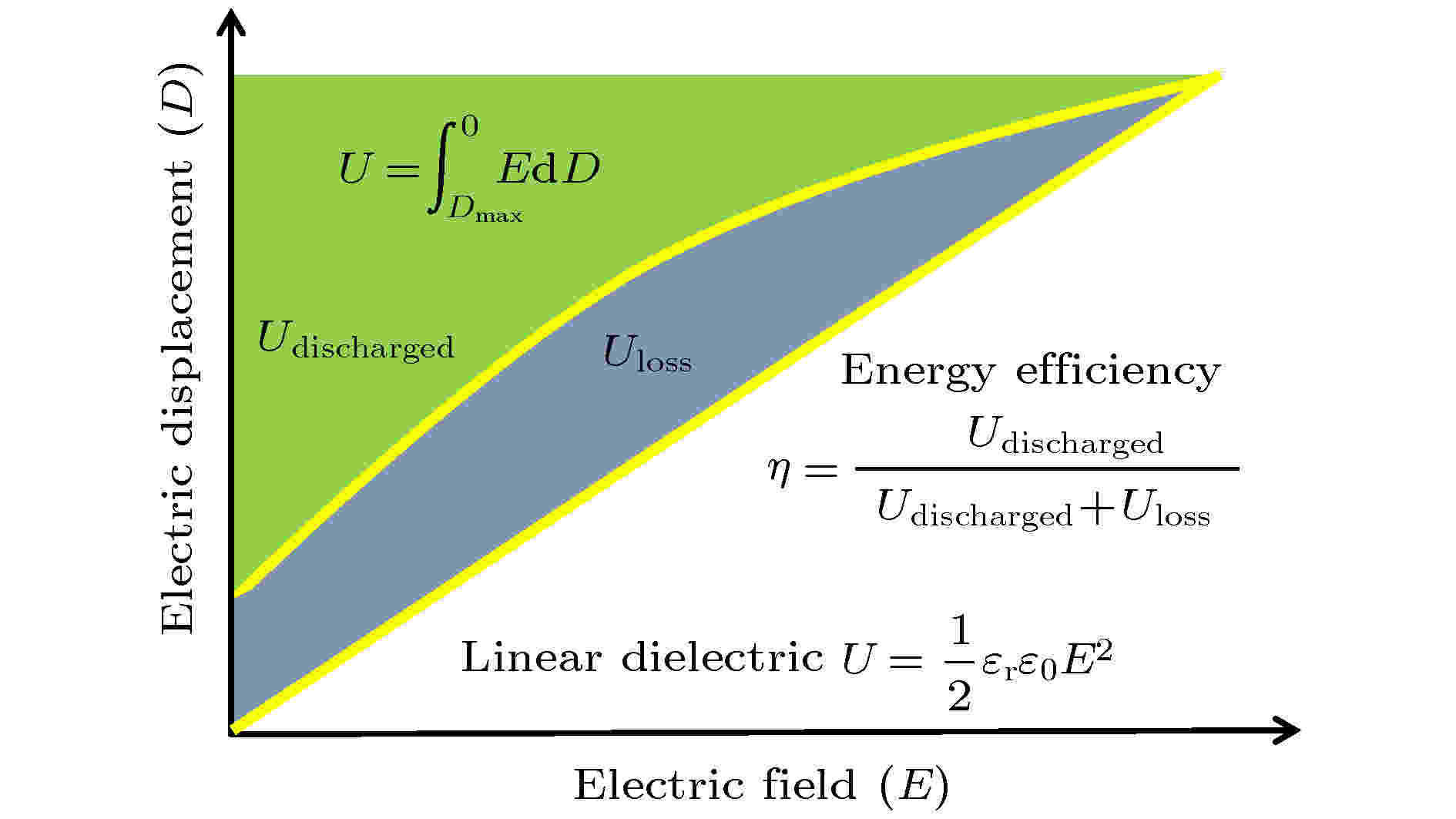
2020, 69 (21): 217706.
doi: 10.7498/aps.69.20201209
Abstract +
Electrostatic capacitors based on dielectrics delivering an ultrahigh power density, low loss and high operating voltage, are widely used in energy storage devices for modern electronic and electrical systems. Dielectric polymers, especially ferroelectric polymers, are preferable for an energy storage medium in film capacitors due to their superiority in ultrahigh breakdown strength, low mass density, flexibility, and easy fabrication process. Ferroelectric polymer nanocomposites combining the advantageous properties of ferroelectric polymer matrix and high dielectric constant of ceramic fillers, show great potential applications in achieving superior energy storage performances and have aroused substantial academic interest. This review focuses on the recent research progress of high-energy-density ferroelectric polymer nanocomposites. First, the synthesis and properties of PVDF-based ferroelectric polymers are introduced. Second, the effects of nanofillers, composite structures and interfaces on the dielectric and energy storage properties of ferroelectric polymer nanocomposites are summarized. Third, the underline mechanism of dielectric and energy storage behaviors in ferroelectric nanocomposites are discussed in the aspect of phase-field simulation. Last, the existing challenges and future directions of ferroelectric polymer nanocomposites with high energy storage density are summarized and prospected.

2020, 69 (21): 217707.
doi: 10.7498/aps.69.20201432
Abstract +
In recent years, the existence of ferroelectricity in a series of two-dimensional van der Waals materials has been experimentally confirmed, in which the ferroelectricity induced by interlayer sliding is an important type. This mechanism is not available in traditional ferroelectrics but can be applied to many two-dimensional materials. In this paper we review the relevant researches and introduce the origin of this type of ferroelectricity: in many two-dimensional van der Waals bilayers, the upper layer is not equivalent to the lower layer, thus giving rise to a net interlayer charge transfer and the inducing vertical polarization to be switchable via interlayer sliding. This unique sliding ferroelectricity can widely exist in many van der Waals bilayers, multilayers and even bulk structures. The interlayer sliding barrier is several orders of magnitude lower than that of traditional ferroelectric, which may greatly save the energy required by ferroelectric switching. At present, this type of interlayer sliding ferroelectricity has been experimentally confirmed in WTe2 and β-InSe bilayer/multilayer systems, and more systems predicted to be with much stronger interlayer sliding ferroelectricity (like BN) may be realized in near future.
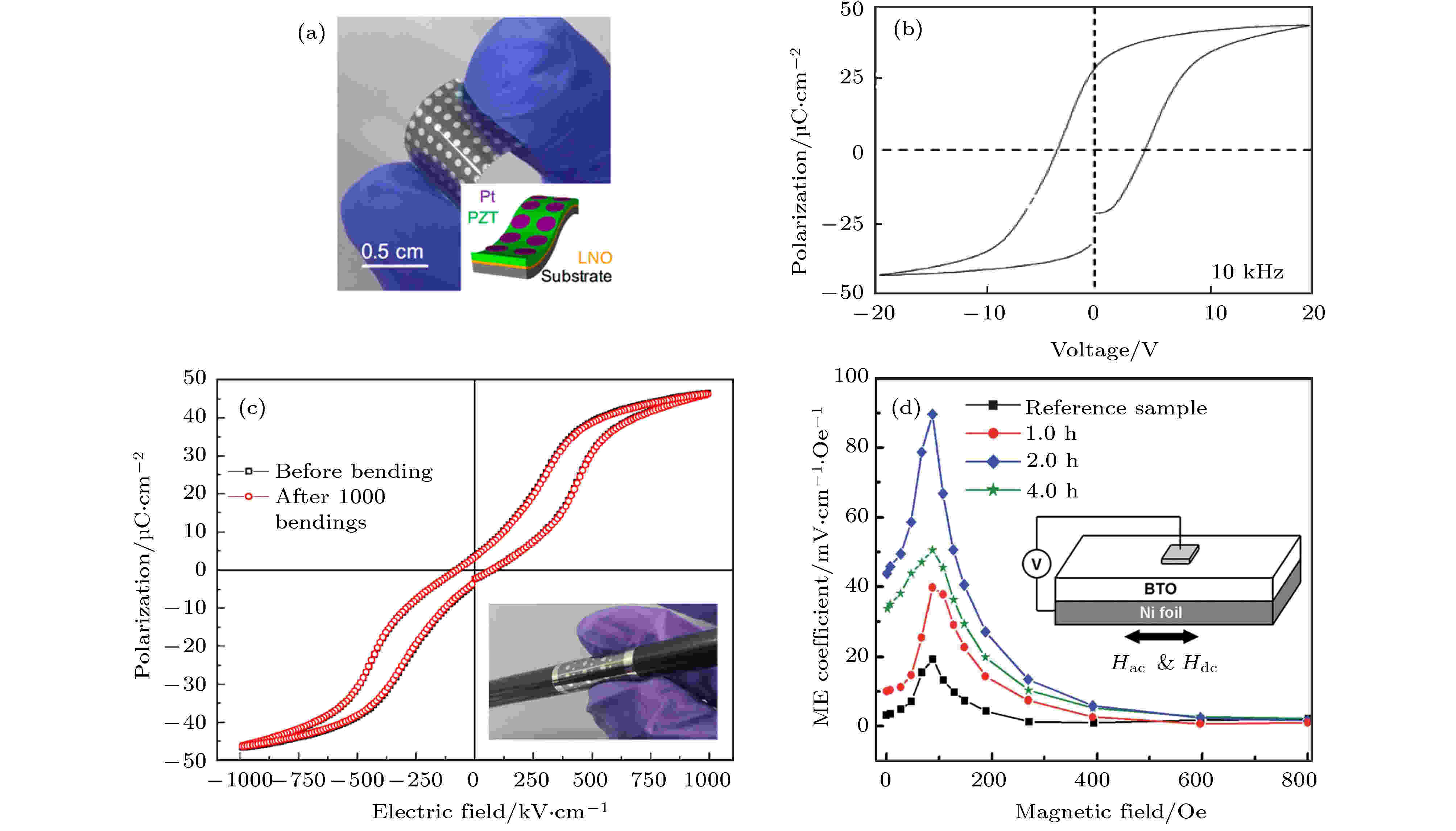
2020, 69 (21): 217708.
doi: 10.7498/aps.69.20201365
Abstract +
Inorganic ferroelectric films exhibit excellent electric and optic properties, which have been widely used in dielectrics, memory, piezoelectric, photoelectric devices, etc. However, conventional synthesis strategies based on rigid single-crystal substrates severely limit their applications in flexible electronics. Realization of flexible inorganic ferroelectric films can introduce the excellent properties of inorganic ferroelectric materials into flexible devices, which is the developing trend for the next generation of electronic devices. In this review, the strategies to fabricate flexible inorganic perovskite structures’ ferroelectric films are summarized, including 1) direct growth on flexible substrates, 2) transferring ferroelectric film from a rigid substrate to a flexible one. Subsequently, the applications of flexible inorganic ferroelectric films are briefly introduced. Finally, research status, prospects and future development trend of flexible inorganic ferroelectric films are discussed.

2020, 69 (21): 217709.
doi: 10.7498/aps.69.20200884
Abstract +
Over the past decades, exploration and artificial control of the surface and interfacial structure of the materials have played an important role in chemical catalyzing, energy conversion, information storage and medical field, and thus the finding of suitable materials with controllable surface/interface properties has attracted intense interest in recent years. Perovskite-type ferroelectric oxides are considered to be one of the most promising functional materials due to their intrinsic, non-volatile, reversible spontaneous polarization and controllable polar surface with high charge density. The investigating of the interaction between polarization and surface structure of perovskite-type ferroelectric oxide is very important for understanding the surface (interface) energy conversion, regulating the adsorption and desorption on the surface, controlling interfacial chemical reaction, and designing stable low-power electronic devices. In this paper, we summarize the theoretical mechanism and potential applications of the surface structures and functionality in perovskite-type ferroelectric oxide from three aspects. Firstly, we describe the inseparable relationship between the stabilized ferroelectric phase and surface structure of ferroelectric material, and illustrate the formation mechanism of complex surface structure of perovskite-type ferroelectric oxide. In order to reduce the surface energy to stabilize the polar surface of the material, perovskite-type ferroelectric oxide always needs to absorb foreign charged particles, change the stoichiometry and conduct electron orbital hybridization or surface relaxation, etc., which will cause the complexity of the surface structure of ferroelectric. Secondly, we outline the influence of ferroelectric polarization on the surface structure of ferroelectric and the behavior of changing ferroelectric polarization by controlling surface structure through adjusting the external environment, which provides an important basis for the subsequent regulation of the surface performance and functionality of perovskite-type ferroelectric oxide. Finally, we introduce the utilization of the controllable physical and chemical properties of ferroelectric surface (interface) into large area and into nanoscale (nanodomain), which has bright application prospects in many frontier fields, including non-volatile memory system, cell proliferation, microfluidic control system, catalysis, optical device and photodetector and so on. Furthermore, considering the limitations of current scientific research about the ferroelectric surface, we put forward the prospects for the future development of the ferroelectric material in the areas of information storage, controllable chemical reactions and new energy conversion.

Recent research progress of two-dimensional intrinsic ferroelectrics and their multiferroic coupling
2020, 69 (21): 217710.
doi: 10.7498/aps.69.20201433
Abstract +
Ferroelectric materials have become a research focus of condensed matter physics because of their electric polarization state which can be regulated by external field and has potential applications in sensors, optoelectronic devices and information memory devices. With the rapid development of microelectronic integration technology, electronic devices are becoming more and more miniaturized, integrated and multifunctional. Due to the size effect and interface effect, the traditional bulk ferroelectric materials are difficult to meet the requirements for this development. Therefore, low-dimensional ferroelectric materials have received extensive attention of the academic circle. In recent years, stable room temperature intrinsic two-dimensional ferroelectric materials have been successfully prepared. The prediction and design of new materials in theoretical method such as first principles calculation also promote the development of two-dimensional ferroelectric materials. At the same time, the multiferroic coupling effect of two-dimensional ferroelectricity, ferrovalley and magnetism can be used to realize the electronic valley polarization, electronic magnetic control and other regulatory mechanisms. The coupling of multiple degrees of freedom will produce strange physical properties such as optical selectivity of circular (linear) polarization between energy valleys and quantum spin Hall effect, which is of great significance for developing spintronics, valley electronics and optics. In this paper, the recent progress of theoretical and experimental research of new two-dimensional ferroelectric materials is introduced, and the applications of two-dimensional ferroelectric materials in two-dimensional ferroelectric devices such as ferroelectric tunnel junctions and ferroelectric diodes are presented. Secondly, the multiferroic coupling effect of two-dimensional electrically controlled ferroelectric valley and electronically controlled magnetism and their derived new physical phenomena and mechanisms are described. Finally, the rich physical connotation and broad application prospects of coupling two-dimensional ferroelectric materials with other physical properties are analyzed and discussed.
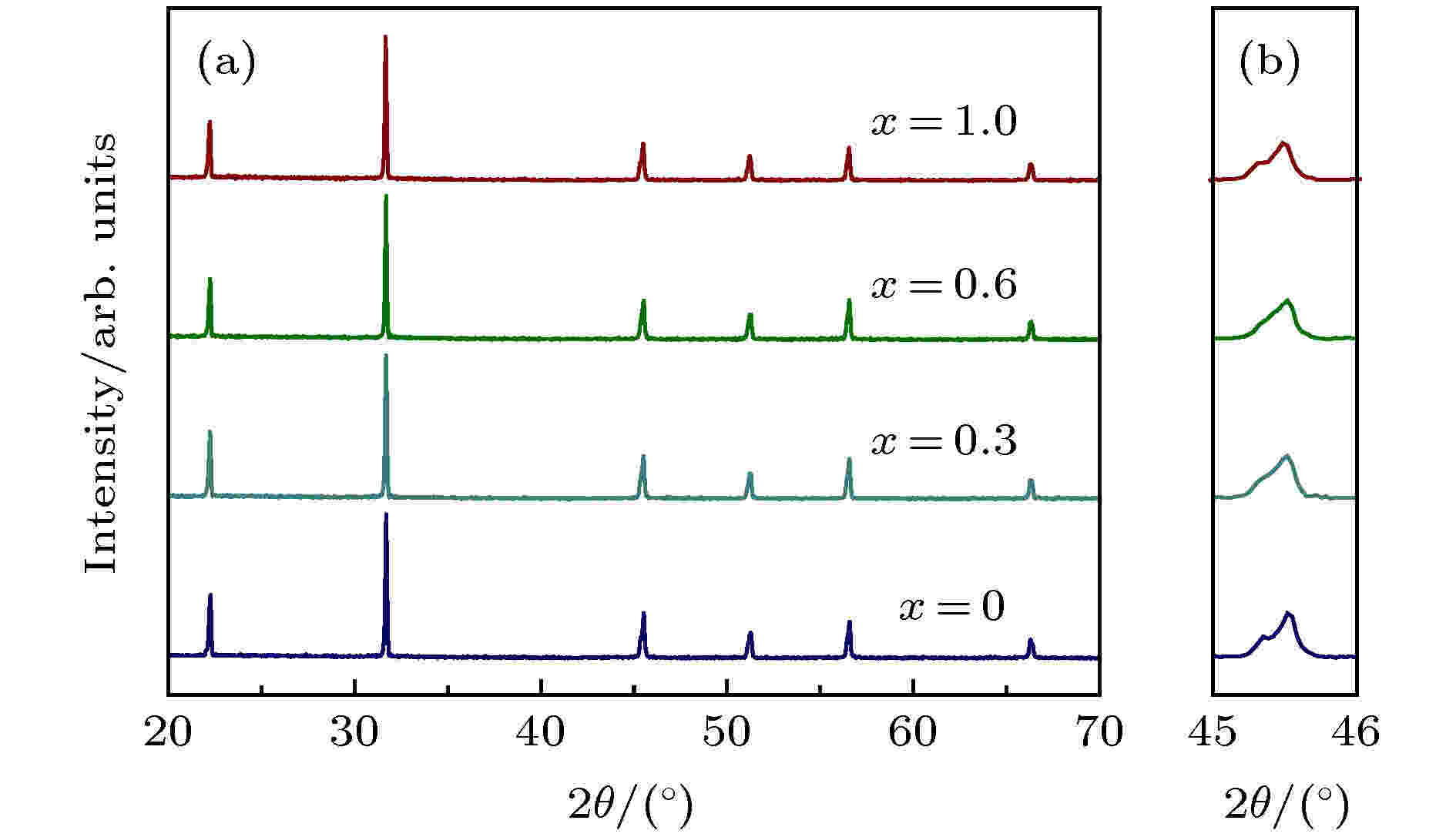
COVER ARTICLE
2020, 69 (21): 217705.
doi: 10.7498/aps.69.20200540
Abstract +
Piezoelectric ceramics, as a kind of functional material, can realize the mutual transformation between mechanical energy and electrical energy, and has been widely used in civil and military fields. With the improvement of people's awareness of environment protection and self-health care, the study of lead-free piezoelectric ceramics with excellent performance and environmental friendliness has become an urgent task. Among several kinds of lead-free piezoelectric materials, potassium sodium niobate [(K, Na)NbO3, KNN]-based ceramics has attracted much attention due to its good comprehensive properties, but there have been carried out few studies focusing on the utilization of phase boundary to regulate the properties of high piezoelectric and electrocaloric effect simultaneously. In this work, lead-free 0.944K0.48Na0.52Nb0.95Sb0.05O3 -0.04Bi0.5(Na0.82K0.18)0.5ZrO3-1.6%(AgxNa1–x)SbO3-0.4%Fe2O3 ceramics is prepared via the conventional solid-state method, and the effect of AS/NS ratio on phase structure, electrical properties, and electrocaloric effect are studied. The obtained results show that the ceramics has a multiphase coexistence with “rhombohedral-orthorhombic-tetragonal” (R-O-T) in all compositions. With the increase of AS content, the piezoelectric and ferroelectric properties of the ceramics fluctuate (d33 = 518–563 pC/N, kp = 0.45–0.56; Pmax = 21–23 μC/cm2, Pr = 14–17 μC/cm2). In addition, the electrocaloric effect (ECE) for each of the samples is studied by the indirect method. Broadening temperature span (~90 K) of electrocaloric effect is obtained in the vicinity of O-T phase transition region, while a low ECE value is observed. A stronger ECE peak (ΔTmax > 0.6 K) can be observed when the measurement temperature reaches near the Curie temperature. Consequently, both large piezoelectric property and high electrocaloric performance can be realized in KNN-based ceramics by new phase boundary construction.
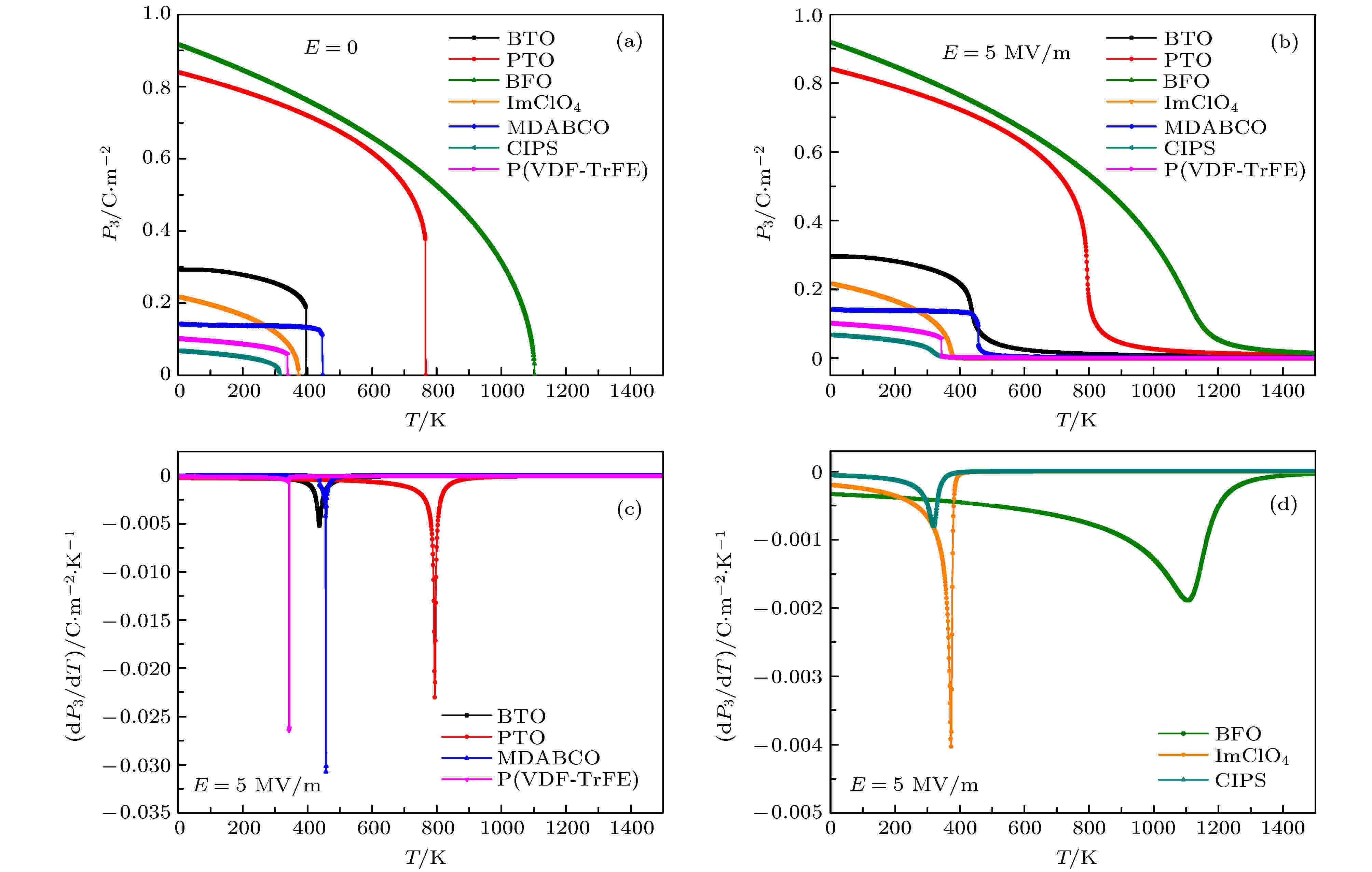
2020, 69 (21): 217801.
doi: 10.7498/aps.69.20201195
Abstract +
The electrocaloric effects in various types of materials, including inorganic perovskites, organic perovskites, organic polymers, molecular ferroelectrics and two-dimensional ferroelectric materials, possess great potential in realizing solid-state cooling devices due to the advantages of low-cost, high-efficiency and environmental friendly. Different ferroelectric materials have distinct characteristics in terms of phase transition and electrocaloric response. The mechanism for enhancing the electrocaloric effect currently remains elusive. Here, typical inorganic perovskite BaTiO3, PbTiO3 and BiFeO3, organic perovskite [MDABCO](NH4)I3, organic polymer P(VDF-TrFE), molecular ferroelectric ImClO4 and two-dimensional ferroelectric CuInP2S6 are selected to analyze the origins of their electrocaloric effects based on the Landau-Devonshire theory. The temperature-dependent pyroelectric coefficients and electrocaloric performances of different ferroelectric materials indicate that the first-order phase transition material MDABCO and the second-order phase transition material ImClO4 have excellent performances for electrocaloric refrigeration. The predicted results also strongly suggest that near the phase transition point of the ferroelectric material, the variation rate of free energy barrier height with temperature contributes to the polarizability change with temperature, resulting in enhanced electrocaloric effect. This present work provides a theoretical basis and a new insight into the further development of ferroelectric materials with high electrocaloric response.
RAPID COMMUNICATION
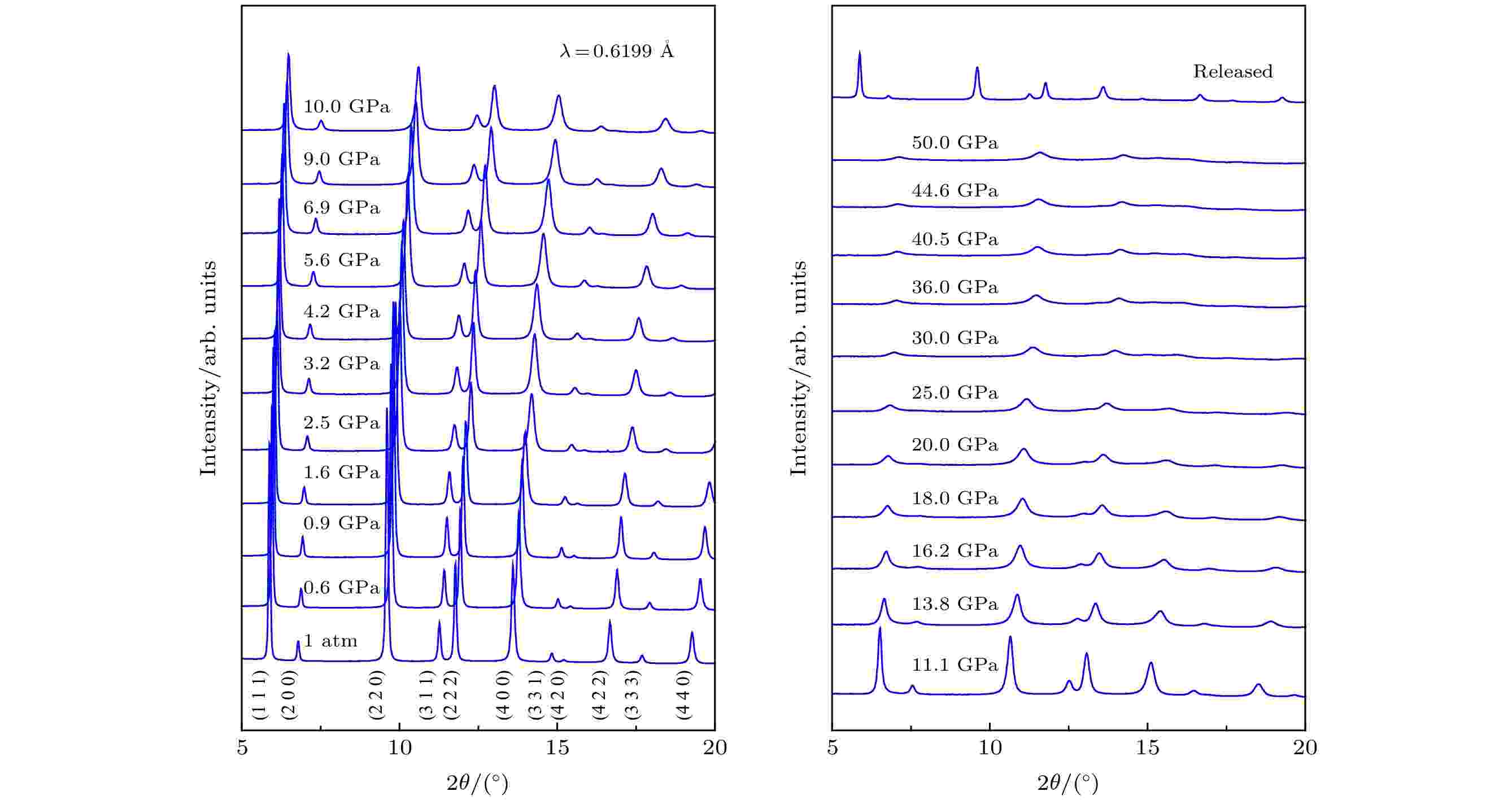
EDITOR'S SUGGESTION
2020, 69 (21): 218801.
doi: 10.7498/aps.69.20200988
Abstract +
In recent years, organic-inorganic hybrid perovskite materials have been widely used in solar cells, photodetectors, and light-emitting diodes due to their advantages such as high light absorption coefficient, good carrier mobility, and long carrier diffusion length. However, the high toxicity of lead and poor stability still restrict the application and promotion of such materials. The lead-free double perovskite material derived from the concept of “heterovalent substitution”, while maintaining the high symmetrical structure of perovskite, avoids using the toxic lead elements, which has the advantages of environmental friendly, stable structure, and suitable band gap. At present, the limited research on lead-free double perovskite materials still leaves a big room to researchers, and such a limited research seriously restricts the development and promotion of such materials. Therefore, the relationship between the structure and performance of lead-free double perovskite materials needs further exploring in order to provide theoretical basis for the practical application of such materials. Here in this work, the lead-free double perovskite material Cs2TeCl6 is prepared by the solution method. The crystal structure and optical properties of the lead-free double perovskite Cs2TeCl6 under high pressure are investigated by using diamond anvil cell combined with in-situ high-pressure angle-dispersive X-ray diffraction and ultraviolet-visible absorption technology. The results show that the crystal structure of Cs2TeCl6 is not changed within the experimental pressure range of 0-50.0 GPa, and the structural symmetry of Fm-3m is still maintained, indicating the sample has good stability. The lattice constant and volume of Cs2TeCl6 gradually decrease within the pressure range of 0-50.0 GPa. The volume and pressure of Cs2TeCl6 are fitted using the third-order Birch-Mumaghan equation of state, the bulk elastic modulus is obtained to be B0 = (18.77 ± 2.88) GPa. The smaller bulk elastic modulus indicates that the lead-free double perovskite material Cs2TeCl6 has higher compressibility. The optical band gap of Cs2TeCl6 is 2.68(3) eV at 1 atm and its optical band gap gradually decreases with the increase of pressure, which is related to the shrinkage of octahedral [TeCl6]2– under high pressure. The calculation results show that the Cs2TeCl6 possesses an indirect band gap, the valence band maximum is mainly composed of Cl 3p orbits, and the conduction band minimum is mainly composed of Te 5p and Cl 3p orbits. After the pressure is completely relieved, Cs2TeCl6 returns to the initial state. The above conclusions further deepen the understanding of the crystal structure and optical properties of lead-free double perovskite Cs2TeCl6, and provide a theoretical basis for designing and optimizing the lead-free double perovskite materials.
REVIEW
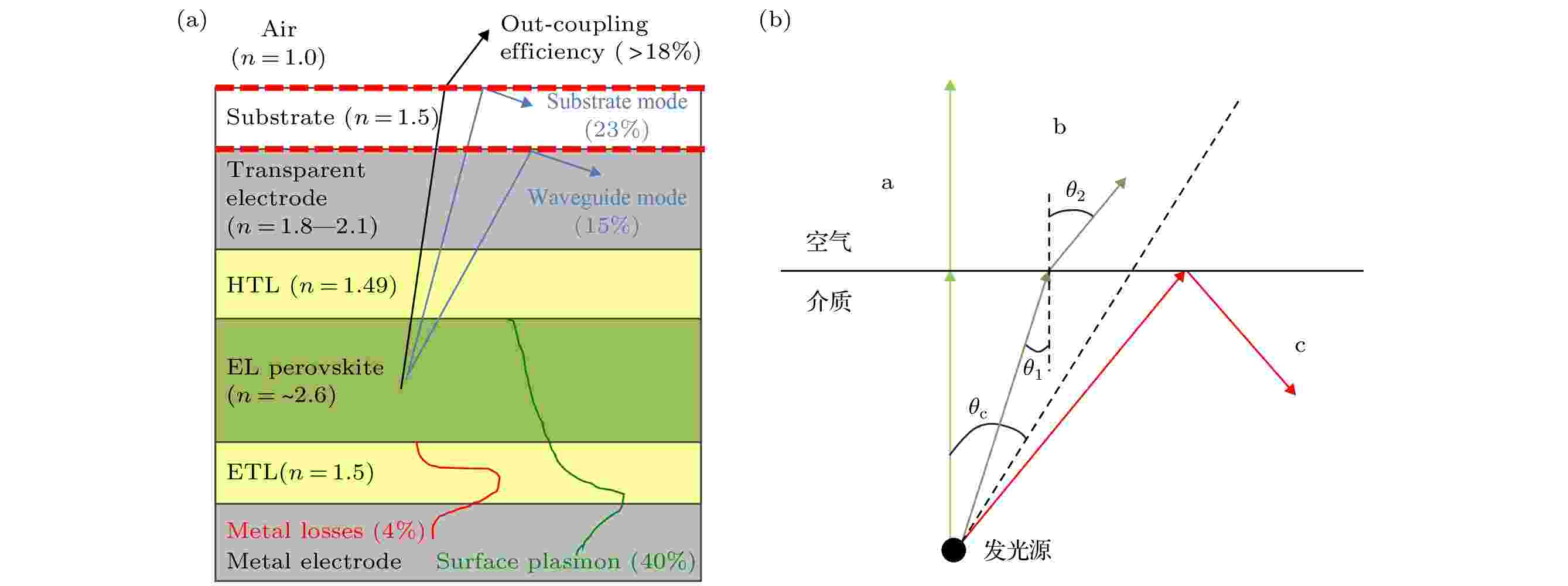
2020, 69 (21): 218501.
doi: 10.7498/aps.69.20200755
Abstract +
Perovskite light emitting diodes (PeLEDs) have developed rapidly in recent years due to their advantages of tenability of band gap and high color purity. At present, the external quantum efficiency of PeLED has rised up to 20%. Like the scenario of organic light emitting diode, there exist various internal losses in PeLED with low light extraction efficiency. It arises from the absorption of substrates, waveguide transmission and surface plasmon resonance of metal electrode. To improve the luminescence performance of PeLED, a well-matched optical admittance between the thin-films inside the devices is required. In this paper, the strategies of enhancing the light extraction efficiency are adopted as the materials and structures in PeLED are concerned. The applications of alternative electrode in PeLED are discussed, such as graphene, silver nanowires, metal transparent electrode and some new-types of electrodes. In addition, the plasma effect is also introduced into the PeLED to deflect the emitting light. What is more, the nano-structure grating is inserted into device to reduce the optical losses due to the large refractive index difference between the interfaces in device. Therefore, the external quantum efficiency of PeLED rises up to 28.2%, and the current efficiency can reach 88.7 cd/A.
GENERAL
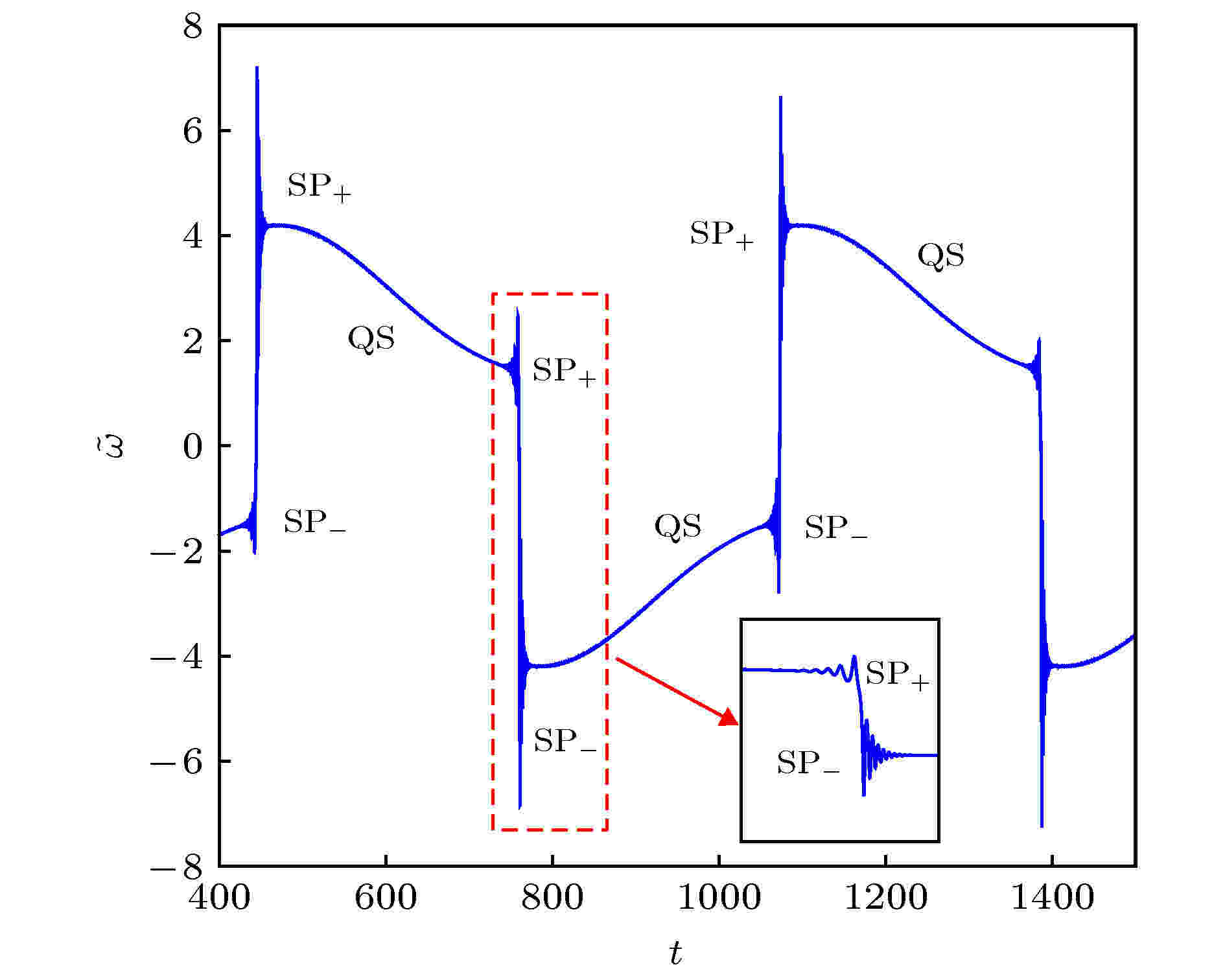
2020, 69 (21): 210501.
doi: 10.7498/aps.69.20200413
Abstract +
The main purpose of this paper is to reveal the evolution mechanism of the bursting oscillation and suppress the bursting oscillation. The permanent magnet synchronous motor (PMSM) system is taken as a research object, and the case of the PMSM with periodic external load perturbation is considered. The first part in this paper is for the analysis of bursting oscillation. First, a mathematical model of the non-autonomous PMSM system with external load perturbation is established, and the frequency of the external load perturbation is set to be far less than the natural frequency of the PMSM system, so that the PMSM system has a fast-slow coupling effect. Then, the non-autonomous PMSM system with external load perturbation is transformed into a generalized autonomous PMSM system by taking the external load perturbation as a slow-varying parameter of the PMSM system. In order to obtain the bifurcation behaviors and different equilibrium types of the PMSM system, the time series diagram, the equilibrium point distribution curve that changes with slow-varying parameter, and the transformed phase portrait are analyzed. Finally, the evolution mechanism of bursting oscillation is revealed by analyzing the overlay of the equilibrium point distribution curve and the transformed phase portrait, and it is found that the change of the equilibrium type and the corresponding bifurcation behavior will cause the PMSM system to exhibit “periodic symmetrical subcritical Hopf bursting oscillation”. The second part focuses on the control of the bursting oscillation. First, a macro-variable is defined by using the synergetic control strategy, which is a linear combination of all state variables of the PMSM system. Then, the synergetic controller is designed based on the constraint that the macro-variable converges to the invariant manifold. When the macro-variable converges to the invariant manifold, the PMSM system is also stabilized to the equilibrium. In addition, in order to explore the influence of controller parameters, a large number of simulation experiments are carried out, and the relationship between the control parameters with the response speed of the PMSM system is obtained. Finally, the effectiveness of the synergetic control strategy is verified by changing the amplitude of the external load perturbation. The simulation results show that the synergetic control strategy has a continuous control law when the system has external load perturbations, and can effectively suppress the bursting oscillation phenomenon of the PMSM system, so that the PMSM system runs stably.
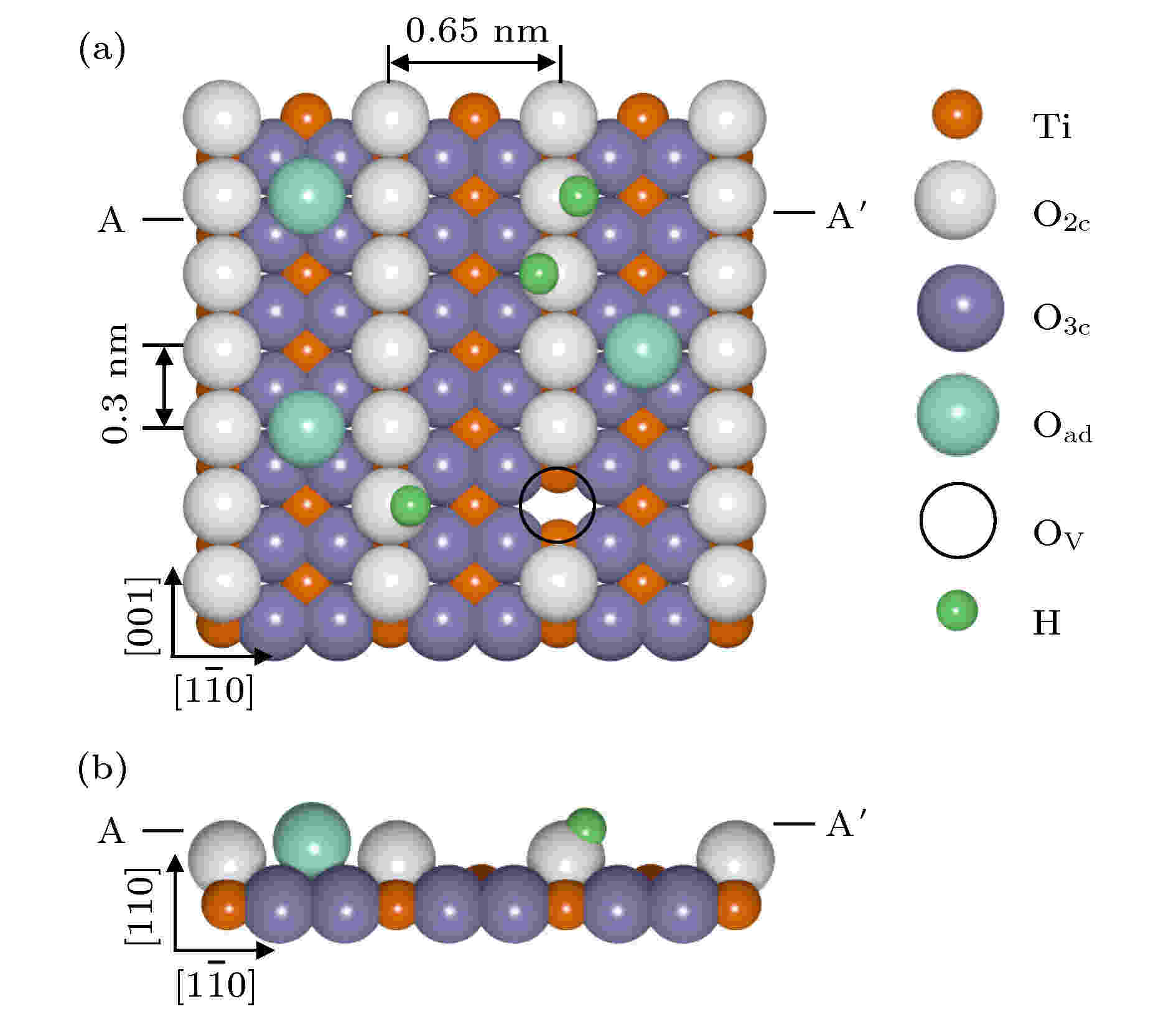
2020, 69 (21): 210701.
doi: 10.7498/aps.69.20200773
Abstract +
NUCLEAR PHYSICS
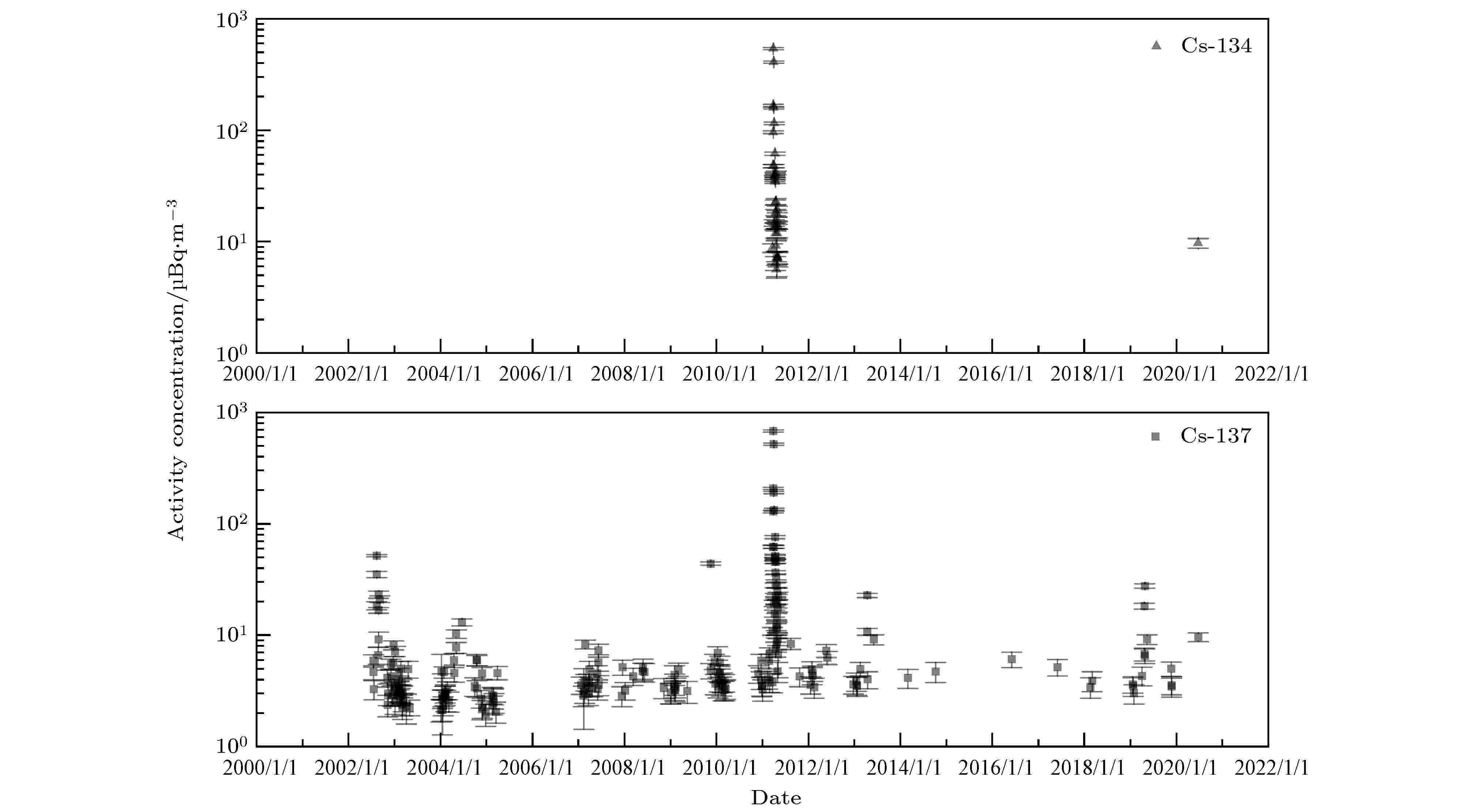
2020, 69 (21): 212801.
doi: 10.7498/aps.69.20201397
Abstract +
On 22 June 2020, the trace amount of 134Cs, 137Cs and 103Ru in the atmosphere were detected by RN63 radionuclide station (in Sweden) of the International Monitoring System (IMS) for the Comprehensive Nuclear-Test-Ban Treaty (CTBT). Finland and Estonia declared the observation of these radionuclides and 141Ce, 95Zr and 95Nb respectively from 14 to 22 June 2020. Regarding the source term of the detection, various views all over the world were expressed on the networks. In this paper, these radionuclides and their activity concentrations are analyzed, and the nature of the detective event is determined through the analysis of these monitored data and the historical monitored data of each station. In addition, the release time of these radionuclide is estimated, and possible source term regions are obtained by using an atmospheric transport model. The results show that the activity ratio of 134Cs to 137Cs is about 1.10, which can exclude the possibility that the radionuclides detected come from nuclear test or nuclear explosion. The detection of 131I and 133I at the IMS RN61 station may be related to the small defection of reactor fuel assembly, and correlated temporally with the detection of 133Xe at the IMS RN49 station. Preliminary conclusions indicate that the 134Cs, 137Cs and 103Ru are likely to be related to the release of improper handling of reactor maintenance or fresh spent fuel transfer in Northern Europe region. Furthermore, due to the activity concentration is only μBq/m3 order of these radionuclides, it has no effect on public health.
ATOMIC AND MOLECULAR PHYSICS
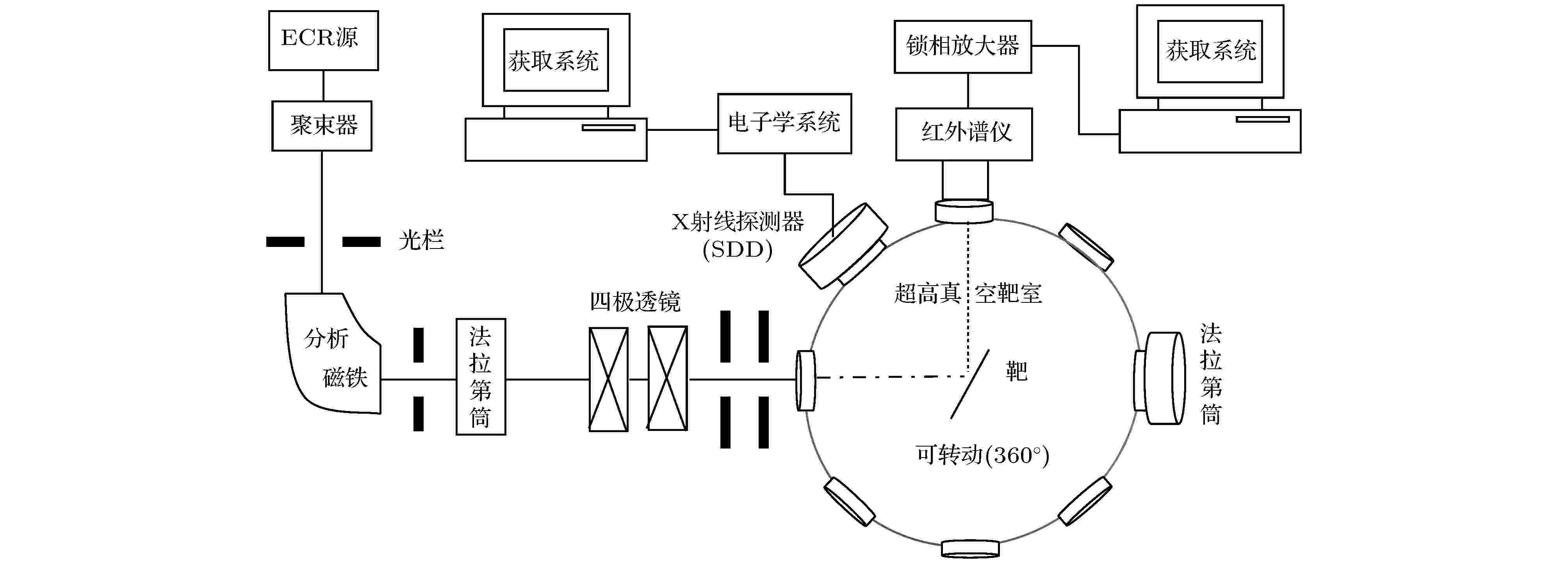
2020, 69 (21): 213301.
doi: 10.7498/aps.69.20200500
Abstract +
During the interaction of highly charged ions with solid target in the energy region near the Bohr velocity, the potential energy of the projectiles will be deposited on a nanometer-scale target surface within the time on the order of femtoseconds. That will lead the target atoms to be ionized into ions and the ions to be excited, resulting in the multiple ionization states and the complex configuration of energy levels. The de-excitation radiations of these levels cover the radiations from near-infrared spectral line to X-ray. Investigation of these spectral lines is significant for investigating the mechanism of such an interaction, diagnosing plasma and studying astrophysics. The experimental results show that the near-infrared spectral lines and X-ray spectra are produced by the 129Xeq+ (q = 21, 23, 25, 27) with kinetic energy of 1360 keV and 129Xe20+ with kinetic energy of 4 MeV impacting on the Cu surface, separately. The experiment is carried out in the National Laboratory of Heavy Ion Research Facility in Lanzhou, HIRFL. The beam intensity is on the order of nA. The highly charged ions capture the electrons of the Cu target and thus being neutralized in a femtosecond time. The energy of the highly charged ions is deposited on the target surface, and the target atoms are excited or ionized, resulting in the transition between complex configurations, such as the dipole forbidden transition (magnetic dipole and quadrupole transition) and magnetic dipole transition of the Cu22+. The infrared spectral lines of the atoms and ions from deexcitation radiation are measured. With the 4 MeV 129Xe20+ ions impacting on solid Cu surfsce, the X-rays are measured, such as, the magnetic dipole deexcitation radiation transition of Cu22+, the X-rays of the L1 edge transition and Lβ3 of the Cu I, Lη and Lβ3 X-rays of the Xe ions. The results show that during the neutrilization of highly charged Xe ions with lower energy above the Cu surface, the infrared lines are mainly from the deexcitation of the incident ions and the ionized or excited target atoms. The increasing trend of the the single ion fluorescence yield of the infrared spectral line is the same as that of the potential energy of the projectile. The characteristic L X-rays of the Xe atom are emitted by the second generation of hollow atoms formed below the surface.
ELECTROMAGNETISM, OPTICS, ACOUSTICS, HEAT TRANSFER, CLASSICAL MECHANICS, AND FLUID DYNAMICS

2020, 69 (21): 214101.
doi: 10.7498/aps.69.20200728
Abstract +
Asymmetric transmission (AT) metamaterials are extensively studied and applied in the fields of polarization converters and photodiodes. In order to further improve the properties of polarization conversion and unidirectional conduction in the high frequency band and to implement their tunability, the novel chiral electromagnetic metamaterials are studied. By the topology optimization technique, a new type of double-layer L-shaped variant metamaterial structure with excellent asymmetric transmission characteristics is designed. The objective function is to maximize the asymmetric transmission coefficient for the linear polarization wave. The rotationally symmetrical design domain is determined by considering polarization conversion and computation efficiency simultaneously. The design domain of upper layer is divided into two parts which are both the 180° rotationally symmetrical. The design domain of the upper layer and lower layer are the 90° rotationally symmetrical around the x and z axis respectively. Therefore, the number of design variables is only 18. Asymmetric transmission of linear polarization wave in the K band and Ka band are implemented. Numerical simulation results and experimental results show that the optimized chiral metamaterial has excellent asymmetric transmission characteristics, and its asymmetric transmission coefficient reaches 0.8562 at a frequency of 21.65 GHz and 0.8175 at a frequency of 28.575 GHz. Its asymmetric transmission mechanism is expounded by analyzing the electric field and surface current distribution at the resonance frequency. Based on the optimized chiral metamatertials, the reasonable geometric parameters are selected and the rotation angle of the metal layer is changed in order to further achieve the tunable AT characteristics. First, the influences of the dielectric substrate layer, the thickness of the metal layer and the side length of the grid on resonance frequency and asymmetric transmission coefficient are analyzed respectively, which provides the basis for the reasonable adjustment of the structural parameters to obtain better asymmetric transmission characteristics. After the reasonable geometric parameters are determined, the rotational angle of the upper metal layer and lower metal layer are changed. The linearly and circularly polarized wave are simultaneously achieved in the K band. In this article, the topology optimization technique is used to design the asymmetric transmission chiral metamaterial structure. The design process has a clear direction. The optimized asymmetric transmission chiral metamaterial has the simple structure type and the easy tunability of its asymmetric transmission characteristics. It can be used widely and easily in the fields of polarization converters and photodiodes. This design method has a broad application prospect in the chiral metamaterial field.

2020, 69 (21): 214201.
doi: 10.7498/aps.69.20200098
Abstract +
In order to estimate the attitude parameters of space objects under the condition of space-based long-distance observation, a hierarchical solving method based on the time-series spectral signal is proposed to estimate the parameters of surface reflection characteristics and the attitude of the space objects. The first step is to let the space object in three-axis stabilization state be equivalent to a two-facet model. Then multi-level fusion model of bidirectional reflectance distribution function (BRDF) is introduced to describe the spectral reflection characteristics of complex material surfaces. Based on the time-series spectral signal and its model, the product of area and spectral BRDF of the two-facet can be reconstructed. The second step is to set up the two-facet characteristic difference model to select the optimum wavelength based on the maximum of the difference thereby minimizing the influence of coupling characteristics on of the two-facet on attitude estimate. The third step is to construct the time-series spectral signal model under the change of object attitude. The objective function is defined as the error between the model data and the measured data, then the attitude parameter can be estimated using Levenberg-Marquardt algorithm. The simulation result shows that the method is more suitable for the object with cube body, and the error between inversion value and real value will increase as the phase angle and the detector noise increase. When signal-to-noise ratio is greater than or equal to 10, the inversion error is within 2%.

EDITOR'S SUGGESTION
2020, 69 (21): 214202.
doi: 10.7498/aps.69.20201055
Abstract +
Gallium arsenide (GaAs) is an important semiconductor material with direct bandgap and clear-cut absorption edge. High-quality crystal is available, which has excellent performances in the field of high power transmission and luminescence because of high laser damage threshold and high thermal conductivity. Nonlinear optics is of great significance for developing the laser technology, spectroscopy, and optoelectronic devices. The Z-scan technology is a nonlinear measurement method based on the analysis of single beam transmittance. Previous studies mainly focused on the measurement of the nonlinear absorption coefficient of the sample by open-aperture configuration of Z-scan and the nonlinear refractive index of the sample by shut-aperture configuration of Z-scan. We build a dual-channel Z-scan system with variable optical path difference, equipped together with a high speed camera, to observe the spatial distribution of transmitted light. Besides, we find the interference rings induced by nonlinear absorption in semiconductor GaAs crystals. Using three kinds of lasers (continuous-wave laser, 80 MHz femtosecond pulsed laser, 1 kHz femtosecond pulsed laser) to illuminate the GaAs crystal separately, multi-level interference rings come out only when a GaAs crystal wafer is illuminated by a femtosecond pulsed laser. In the single-channel Z-scan experiment, we observe that the interference rings contract or expand regularly when changing pulsed laser intensity incident on the surface of GaAs crystal. The higher the intensity of pulse, the more interference rings appear, and the maximum exiting angle becomes larger. Nonlinear effect of high intensity femtosecond pulsed laser locally changes the refractive index of GaAs crystals, resulting in optical path difference (Kerr lens effect). However, the Kerr lens generated by ultrafast light pulse in GaAs crystal cannot focus a beam as done by an ideal thin lens, leading the transmitted light to form interference rings instead. By analyzing the variation of the interference rings, the nonlinear absorption coefficient and refractive index of GaAs crystal can be obtained. In the dual-channel Z-scan experiment, different interference rings are induced in the GaAs crystal as the path difference between the two pulses changes, as done by the nonlinear transmission power. Thus we obtain the formation time of the interference rings and ascribe it to the ultrafast relaxation process of GaAs carriers.
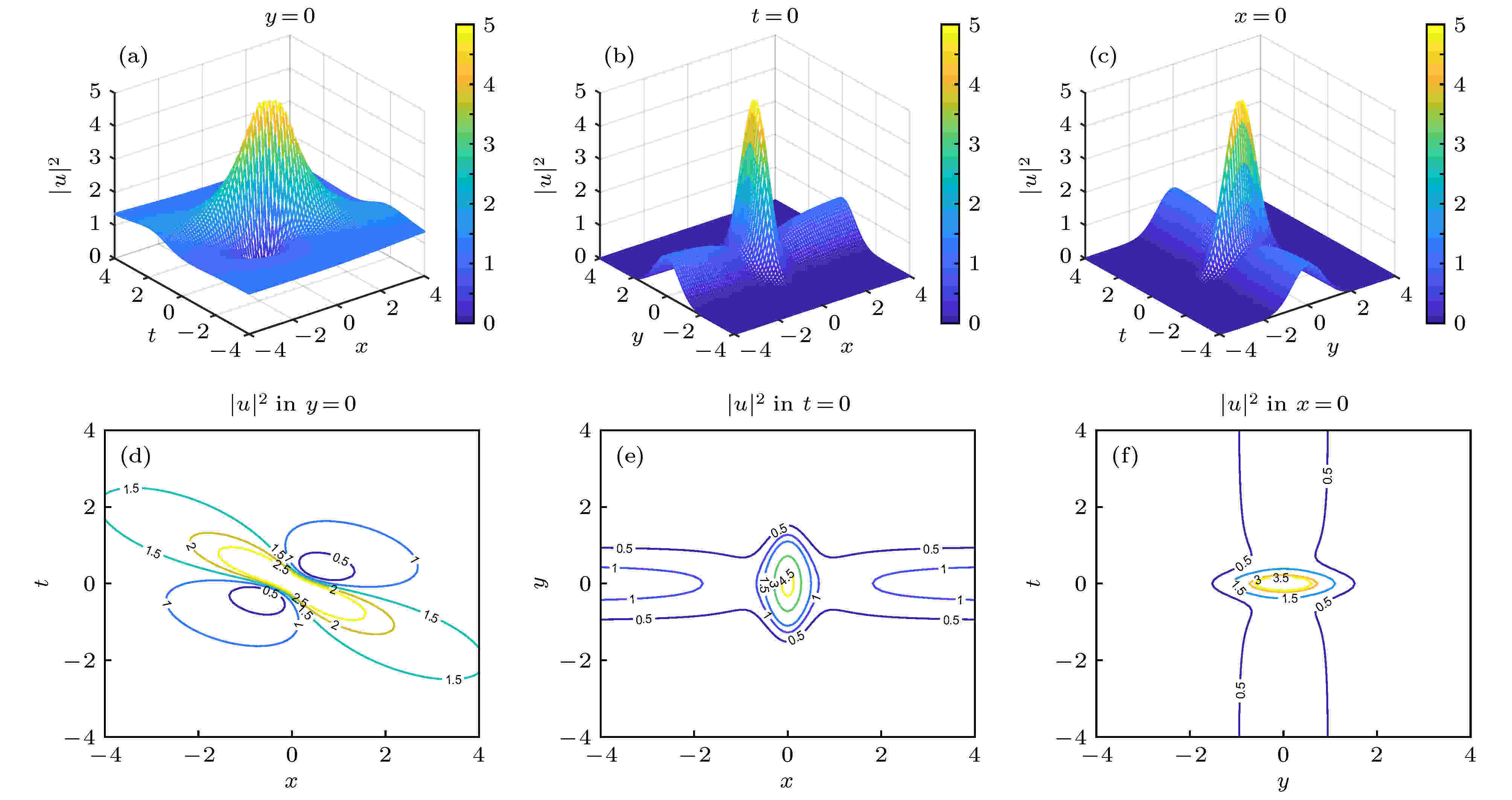
2020, 69 (21): 214203.
doi: 10.7498/aps.69.20200710
Abstract +

EDITOR'S SUGGESTION
2020, 69 (21): 214401.
doi: 10.7498/aps.69.20201000
Abstract +
Hypersonic reattachment flow usually causes extremely high wall heat flux, which is of great concern in engineering. The flow can be modeled as a high-speed shear layer impinging on a wall at a certain angle, which forms an oblique stagnation-point flow in the vicinity of the stagnation point, including stagnation-component and shear-component. Previous work focused on incompressible oblique stagnation-point flow, while in the present study a semi-analytical-semi-numeric solution is given via the self-similar method for compressible oblique stagnation-point flow. Through the comparison and validation with the numerical results, it is found that the flow model can well simulate the heat transfer near the wall in the flow of uniform shear layer impinging on the wall caused by hypersonic reattachment. With the analysis of the contribution of the energy transport and the heat production in the flow model, it is found that the compression effect and dissipation effect are mainly caused by the shear-component, leading to a significant convective heat transfer in the flow direction, which is different from the case of the classic boundary layer. Then the temperature of the flow near the wall rises rapidly after reattachment, resulting in a high heat flux to the wall. Parameter analysis indicates that the wall heat-transfer coefficient is related to the dimensionless wall temperature gradient and the thickness of the boundary layer. The former is mainly controlled by the shear-component parameter $H_{\zeta}$ , and the latter is negatively correlated with the stagnation-component parameter $H_{\beta}$ . Further analysis shows that the wall heat-transfer coefficient has a linear relationship with $H_{\zeta}$ and is proportional to $\sqrt{H_{\beta}}$ when $H_{\beta}$ is small. This work provides a theoretical basis and solution for studying on the hypersonic reattachment flow, and it is also an extension of the asymmetric stagnation boundary layer theory.

2020, 69 (21): 214701.
doi: 10.7498/aps.69.20200351
Abstract +
Simultaneous occurrence of temperature gradient and solute gradient at the fluid-sediment interface is conducive to the onset of salt-finger convection, which may in turn cause adverse effects on fluid mechanism. Ignoring the existence of salt finger would lead to numerical errors or sometimes even qualitative error in calculation of vertical mass fluxes. In this paper, a single-domain approach is adopted for the two-dimensional numerical model of flow coupled temperature and solute in a composite region made up of an upper fluid layer and an underlying saturated porous layer to investigate the evolution of the double diffusion convection of salt-finger form at the fluid-saturated porous interface. Darcian model describing the porous medium and incompressible Navier-Stokes equations in the fluid layer are solved at the same time, where different heat capacities, thermal conductivities and solute diffusion coefficients are considered. Three cases for $ \phi = 0.3{{5}},\;0.4{{0}},\;1 $ are considerded to study the evolution process and structure of salt fingers. The evolution process of salt finger is divided into three stages: diffusion stage, linear growth stage and slow growth stage. For all cases, the kinetic energy is transformed rapidly at linear growth stage, which promotes the mixture of momentum, temperature and salinity at the interface. Then at the slow growth stage, the kinetic energy conversion rate becomes slower before finally the kinetic energy is dissipated by the viscosity and friction. The results show that unlike the salt finger structure in stratified fluid, an asymmetric structure of salt finger is discovered where finger in the porous medium is shorter and wider. The existence of solid skeleton in porous medium hinders the growth of salt finger and reduces the vertical mass flux. Compared with the temperature, the salinity fluctuates more greatly at the interface, which also means that the effect of salt finger on salinity is greater than that of temperature. It is found that the higher the porosity, the faster the growth of thickness of salt finger interface is. Under the condition of high porosity, the potential energy stored by the unstable stratification of salinity is converted much more into kinetic energy, which increases the transport of heat and mass in the vertical direction and thus enhances the mixture capability of salt finger in the vertical direction.
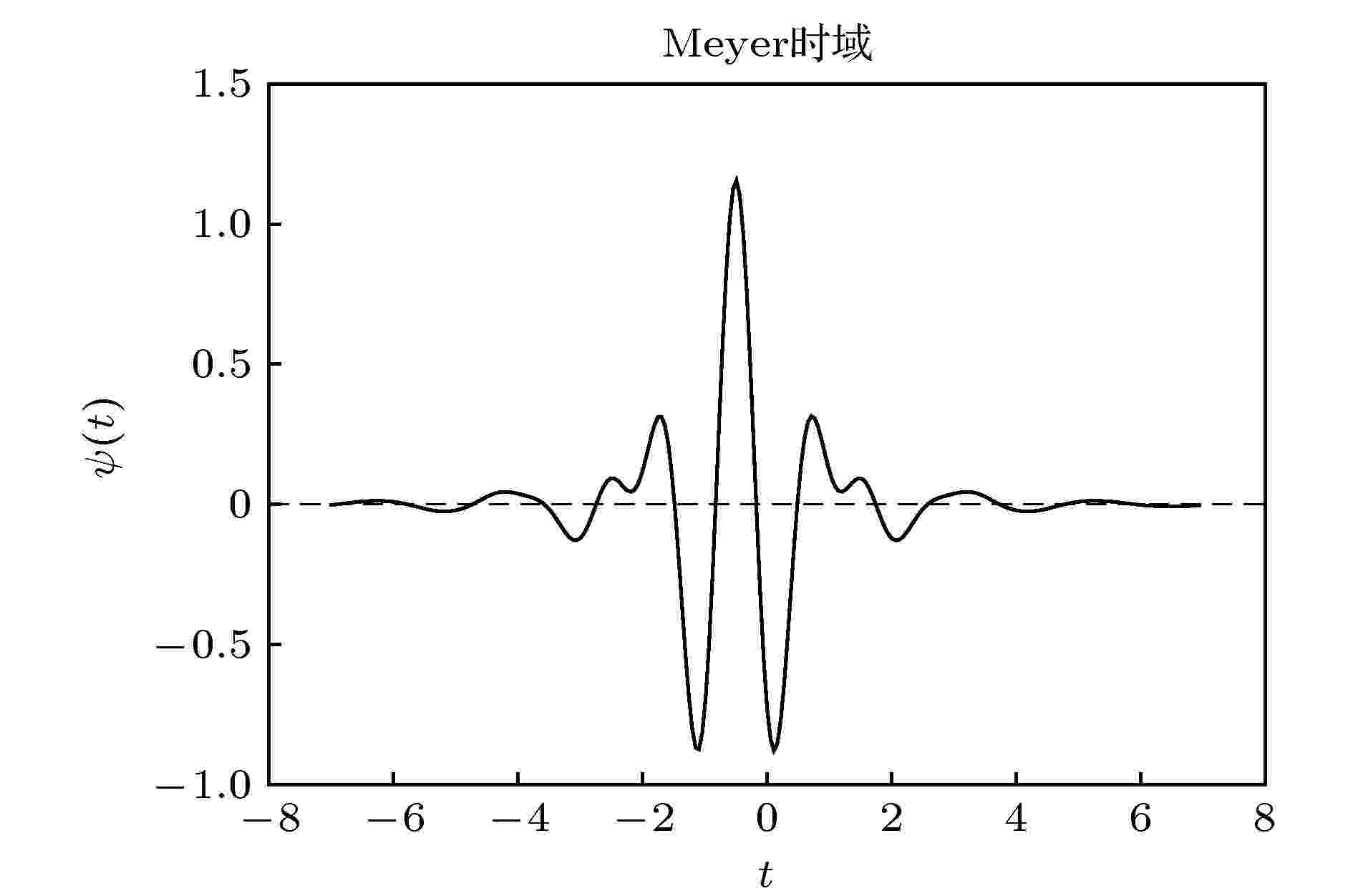
2020, 69 (21): 214702.
doi: 10.7498/aps.69.20200748
Abstract +
In order to obtain the time-varying information and dynamic characteristics of density fluctuation in compressible turbulence, the wavelet method is used to analyze the flow density field of zero-pressure-gradient flat plate turbulent boundary layer at Ma = 3.0, which is measured based on Nano-tracer plane laser scattering technique. Utilizing Taylor’s frozen hypothesis, the spatial signal of density field converts into the temporal signal. The one-dimensional orthogonal wavelet multi-resolution analysis is used to reveal multi-scale turbulent structures, and the results suggest that large-scale structures play a leading role in the density fluctuation of turbulent boundary layer while the small-scale structures make the probability density function (PDF) of density fluctuation manifested as an “M” distribution. The density fluctuation scalar PDF deviates from Gaussian distribution. The Hilbert transformation is used to analyze amplitude modulation effects between large- and small-scale structure, and the results suggest that positive (negative) large scale density excursion in the outer layer induces local enhancement (suppression) of the small scale density fluctuation in the inner layer near the wall. The time-varying spectral density estimation method based on the wavelet transform is used to analyze the density fluctuation at different heights of turbulent boundary layer after proving its viability in time and frequency domain. The results suggest a wide range of frequencies throughout the turbulent boundary layer, mainly distributed within 1 MHz. The density fluctuation in the dominant frequency band is intermittent, most of which transits from high frequency to low frequency while the spectral density first increases and then decreases. Near the wall, the time-frequency distributions of density fluctuation in the logarithmic layer are similar. In the middle part of the turbulent boundary layer, the frequency distribution and spectral density of the density fluctuation each reach a peak. Near the mainstream region, the spectral density decreases obviously, which is mainly distributed near the structure formed by the interaction between the boundary layer and mainstream. The wall constraint, viscous dissipation, and uniform mainstream make the fluctuation nearby the region relatively weak. As a result, the spectrum amplitude of density fluctuation first increases and then decreases from the wall to the mainstream.

2020, 69 (21): 214703.
doi: 10.7498/aps.69.20200630
Abstract +
In this paper, the influence of Hall effect on hypersonic magnetohydrodynamic control is studied. By considering high temperature thermo-chemical reactions, the excitation of thermodynamic temperature of gas molecules, Hall coefficient distribution of various ionized components, and by solving the coupled anisotropic Possion’s equation of Hall electric field and the high temperature thermo-chemical non-equilibrium flow governing equations with electromagnetic source term, the numerical simulation method of the Hall effect on hypersonic magnetohydrodynamic (MHD) control is established, and the numerical simulation of hypersonic MHD control under various conditions is conducted, the mechanism of “leakage” and “gathering” phenomenon of Hall effect and its influence on aerodynamic force and aerothermal environment are analyzed, the mechanism and its influences of Hall effect under various flight altitudes, flight speeds and characteristic lengths are discussed in detail. The result shows that 1) Hall effect changes the Lorentz force distribution of plasma, weakens the total mechanical effect, thus lowering the total magneto-resistance effect. 2) The influence of Hall effect on hypersonic MHD control is closely related to the wall conductivity and the “leakage” phenomenon of the leakage layer near the wall. The “leakage” phenomenon must be restrained in order to enhance the magnetic control effect. 3) The influence of Hall effect on magnetic control thermal protection is complicated, which is the combined result of the “leakage” and “gathering” phenomenon. 4) Based on the normal state in this paper, when the flight altitude is higher than 67 km or the flight speed higher than 5.7 km/s or the characteristic length is bigger than 0.5 m, Hall effect can enhance the magnetic control thermal protection, and the current “gathering” phenomenon dominates the influence on aerothermal environment. On the contrary, Hall effect can weaken the effect of magnetic control thermal protection, and the “leakage” phenomenon dominates the influence on aerothermal environment.
PHYSICS OF GASES, PLASMAS, AND ELECTRIC DISCHARGES
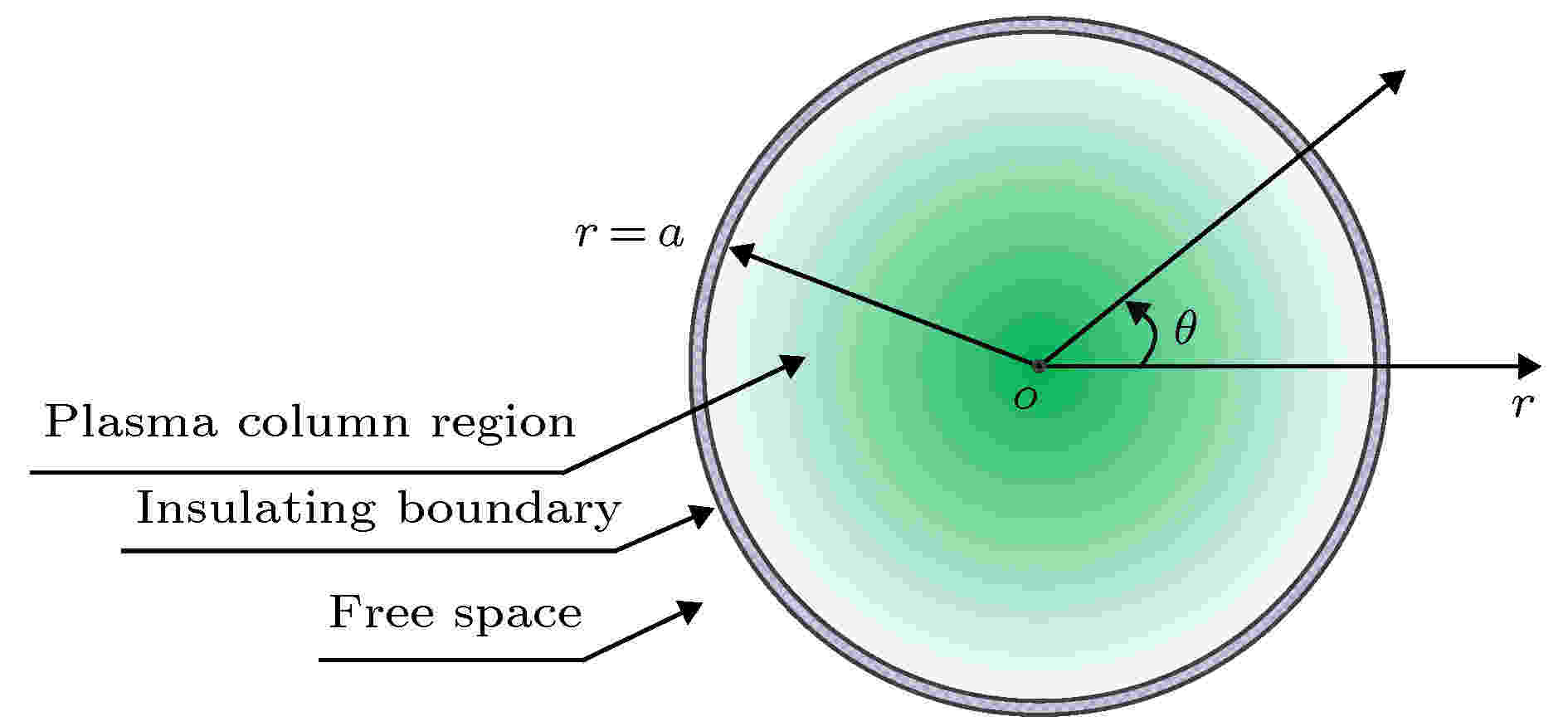
2020, 69 (21): 215201.
doi: 10.7498/aps.69.20201018
Abstract +
Understanding the power deposition characteristic of high density helicon wave plasma source is critical for further investigating into the discharge mechanism of helicon wave discharge. Based on the warm plasma dielectric tensor model which contains both the particle thermal effect and temperature anisotropy and using the insulting boundary condition, the eigenmode dispersion relation of helicon wave and Trivelpiece-Gould (TG) wave propagating in radially uniform plasma column are numerically obtained. Then based on the eigenmode dispersion relation and exact field distribution in the plasma column, the mode coupling properties between the helicon wave and TG wave, the parametric dependence of the cyclotron damping properties of the electron cyclotron wave (TG wave) and power deposition properties of the m = –1, 0, +1 modes under moderate plasma density and low magnetic fields conditions are theoretically investigated in typical helicon plasma parameter range. The detailed investigations are shown below. Under typical helicon plasma parameter conditions, i.e. wave frequency ω/2π = 13.56 MHz and the ion temperature is one-tenth of the electron temperature, there exist a critical magnetic field value B0,c and a critical electron temperature value Te,c for which under the conditions of B0 < B0,c the helicon wave becomes an evanescent wave and the TG wave becomes an evanescent wave when Te < Te,c. The cyclotron damping of the TG wave dramatically increases as the wave frequency approaches to the electron cyclotron frequency. The TG wave becomes a growth wave when the ratio of perpendicular electron temperature to parallel electron temperature is above a certain value. For the high magnetic field, i.e. ω/ωce = 0.1, most of the power deposition is deposited in the central core region, while for the low magnetic field, i.e. ω/ωce = 0.9, the power is deposited mainly in the outer region of plasma column. For typical helicon plasma electron temperature range, Te ∈ (3 eV, 5 eV), the energy depositions induced by the collisional damping and Landau damping of the TG wave are dominant for different electron temperature ranges, which implies that different damping mechanisms have different heating intensities for electrons. Under current parameter condition, compared with the m = +1 mode, the m = –1 and m = 0 mode of the TG wave play major role in the power deposition process, although the cyclotron damping of the TG wave dominates the power deposition in this typical electron temperature range. All these conclusions provide some useful clues for us to better understand the high ionization mechanism of helicon wave discharge.
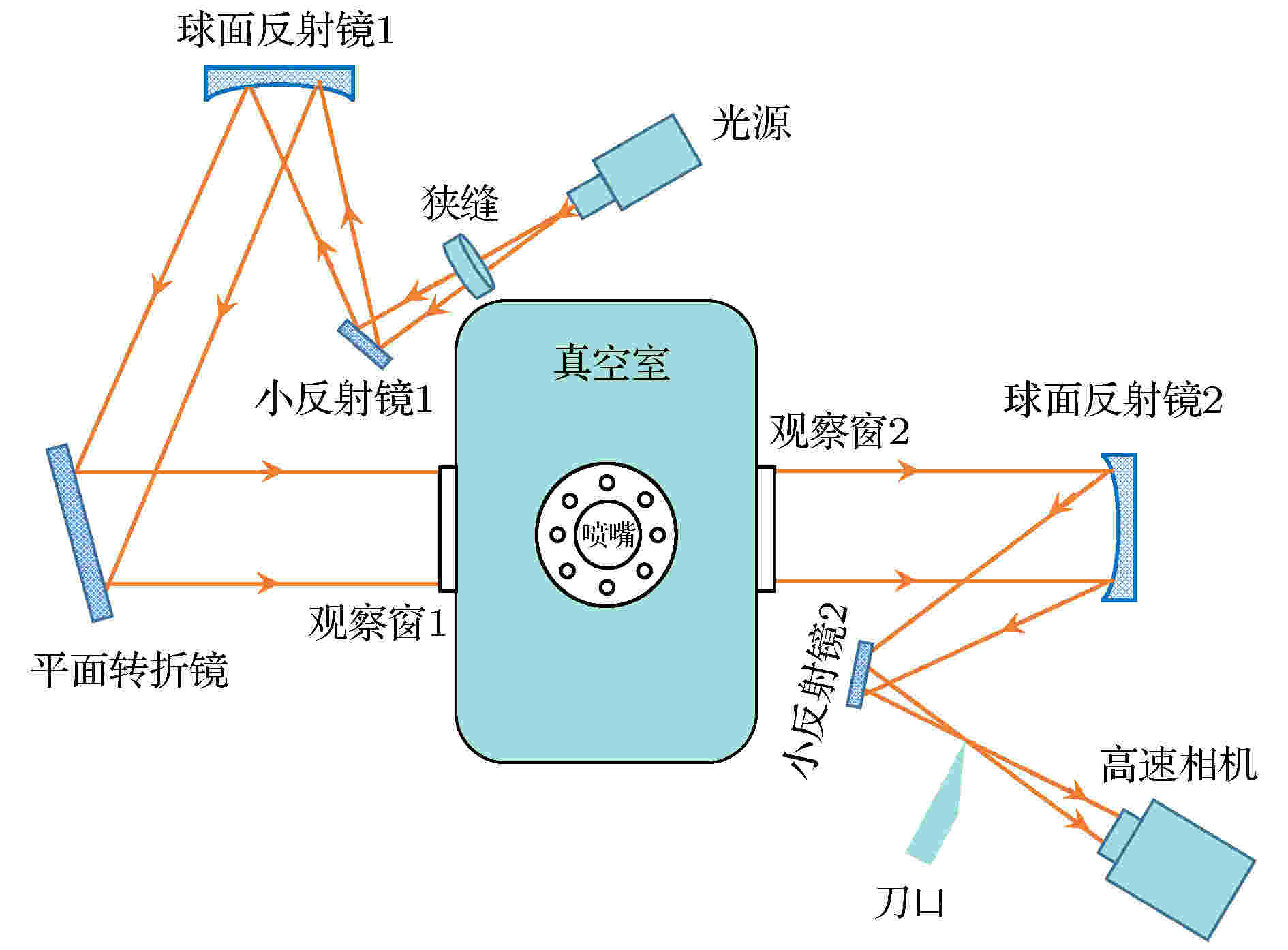
2020, 69 (21): 215202.
doi: 10.7498/aps.69.20201383
Abstract +
Supersonic molecular beam injection (SMBI) is an effective fueling method for the magnetic fusion plasmas. The fueling method was first proposed in the HL-1 tokamak, and now has been applied to several tokamaks and stellarators. Pulsed molecular beam passes from a Laval type nozzle and has a high instantaneous intensity, high directionality and deep deposition in the plasma. The fueling efficiency is higher than the gas puffing efficiency. In addition, it is widely used for controlling plasma density and investigating plasma physics. To further improve the fueling capability in future fusion devices, it is highly desirable to optimize the characteristic of the SMB and further investigate the interactions between the molecular beam and the plasma. In this paper, a schlieren diagnostic system is developed to measure the parameters of molecular beam, and the testing application is performed. The schlieren system, which is based on the schlieren photography, is designed with the zigzag optical path and equipped on the SMBI testing platform to measure the characteristics of the supersonic molecular beam. In order to verify the effectiveness of the system, a series of tests is carried out with different nozzle shapes under atmospheric and vacuum conditions. The beam profiles of CO2 and D2 under different background pressures are obtained. The testing results indicate that the directionality of the integrated Laval nozzle is much better than that of the pinhole nozzle. The schlieren system provides a testing tool for optimizing the supersonic molecular beam.
CONDENSED MATTER: STRUCTURAL, MECHANICAL, AND THERMAL PROPERTIES
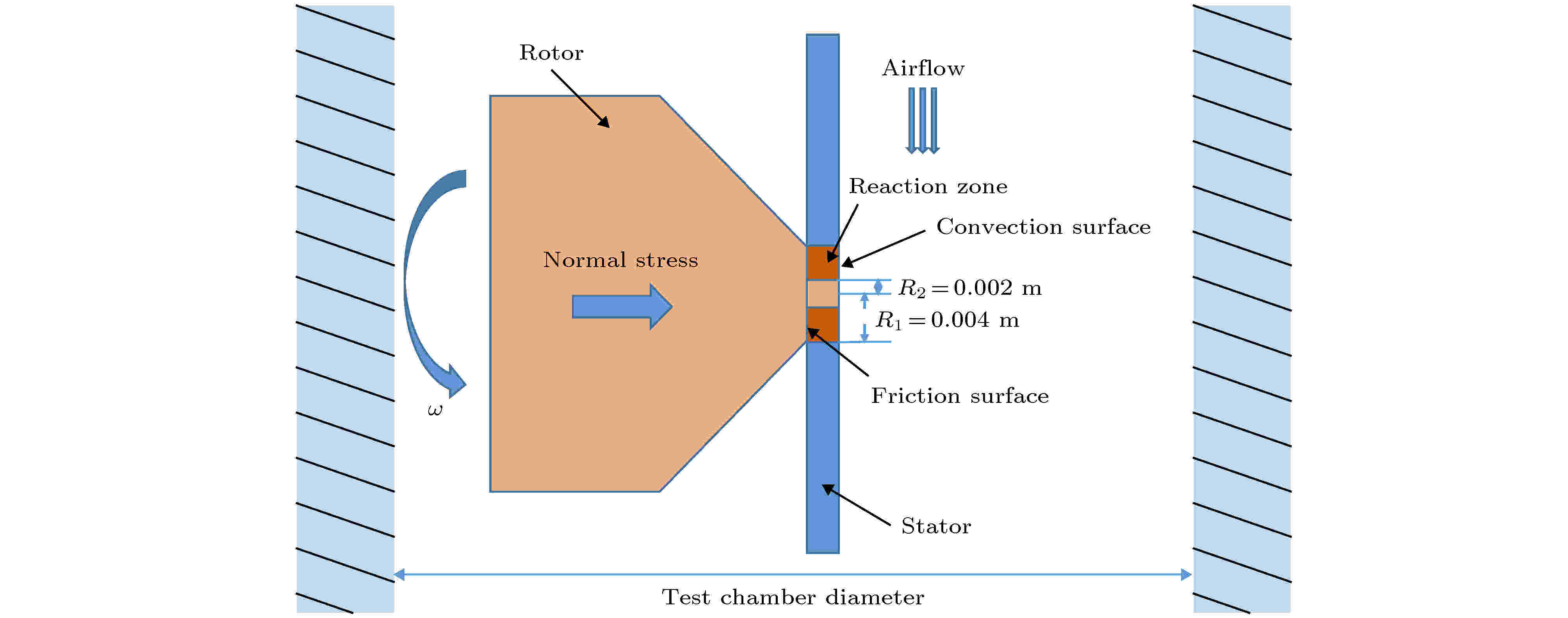
2020, 69 (21): 216101.
doi: 10.7498/aps.69.20200304
Abstract +
Combustion of titanium alloy is a typical catastrophic failure of modern aeroengine. The abnormal friction between compressor rotor and stator is the main ignition source. A thermal theory model with friction heat source of titanium alloy is established based on the theory of heterogeneous ignition. The corresponding equation of critical temperature and ignition delay time are derived. The difference between the frictional ignition model and the classic model is discussed. The concept of critical heat generation temperature is proposed. The difference from the heterogeneous ignition model, and the effects of friction coefficient, oxygen concentration, flow velocity, contact radius and flame retardant layer thickness on the ignition parameters are analyzed. The research result shows that when the instantaneous temperature of the contact surface is lower than the critical heat temperature, the heat generation process is dominated by frictional heat, and when the temperature is higher than the critical heat temperature, the heat generation process is dominated by chemical reaction heat, that reducing the coefficient of friction can dramatically increase the critical temperature, but the change of friction coefficient has very little effect on the ignition delay time which can be ignored, that the critical temperature decreases significantly with the increase of oxygen concentration and the decrease of flow velocity. When the oxygen concentration increases from 21% to 42% and the flow velocity decreases from 310 m/s to 50 m/s, the critical temperature decreases by about 213 K and 197 K, respectively. The relative error between the experimental result and the theoretical result is 8.3%, which verifies the reliability of the model. The contact area has an effect on friction heat generation, reaction heat generation, and surface heat dissipation, and has a great influence on the critical temperature. The critical temperature decreases exponentially with contact radius increasing. When the contact radius increases to 0.007 m, the ignition temperature of the titanium alloy and its flame retardant layer are 899 K and 988 K, respectively. The increase of the thickness of flame retardant layer can effectively improve the critical temperature and ignition delay time. The critical temperature of titanium alloy with flame retardant layer is increased by about 172 K, and the ignition delay time is increased by about 3 s.
INTERDISCIPLINARY PHYSICS AND RELATED AREAS OF SCIENCE AND TECHNOLOGY
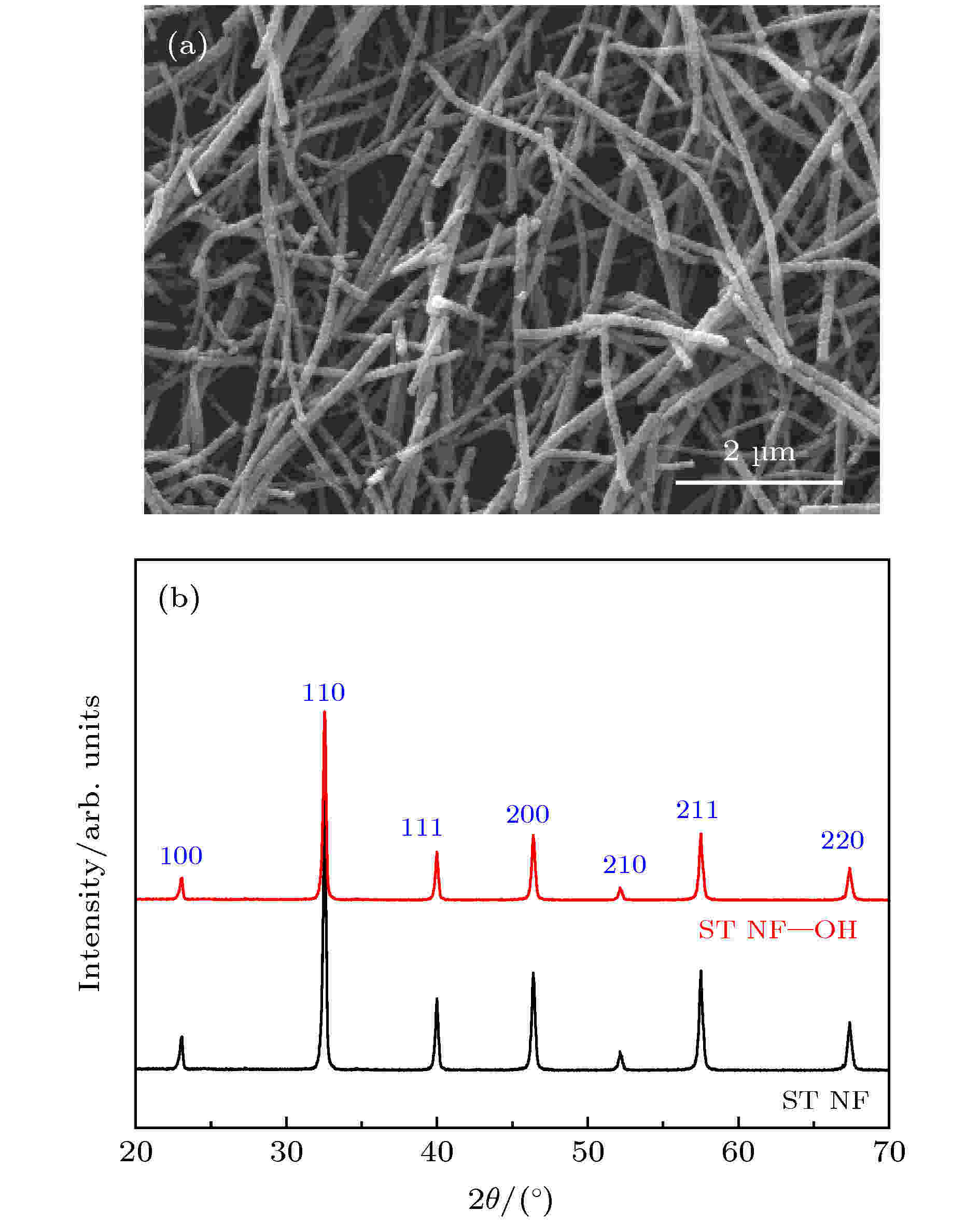
2020, 69 (21): 218101.
doi: 10.7498/aps.69.20200592
Abstract +
With the rapid development of the electronics industry, the dielectric materials with high energy storage density, fast charge and discharge speed, easy-to-process and easy-to-mold, and stable performance are urgently needed to meet the requirements for lightweight and miniaturization of electronic component equipment. Dielectric ceramics has a high dielectric constant, but low breakdown field strength. Polyvinylidene fluoride (PVDF) has the advantages of good flexibility, high breakdown field strength, and light weight, but its dielectric constant is low. Achieving the ability to tailor the interface between dielectric ceramics filler and PVDF polymer matrix is a key issue for realizing the desirable dielectric properties and high energy density in the nanocomposites. As a result, much effort has been made to prepare the polymer composites through the surface modification of the nanoparticles with high dielectric constant fillers dispersed in a matrix, with the hope of preparing composites containing the high dielectric constant of the ceramic fillers and the high breakdown strength of polymers. In this work, in order to obtain the high dielectric-constant and high-energy-storage-density dielectric ceramics, the electrospinning method is used to prepare the SrTiO3 one-dimensional nanofibers as the inorganic fillers and the casting method is adopted to prepare PVDF as the polymer matrix. To improve the interface between inorganic nanofiber fillers and PVDF matrix, the SrTiO3 nanofibers are modified by surface hydroxylation. The effects of suface hydroxylated SrTiO3 nanofibers on the dielectric properties and energy storage properties of PVDF composites are studied. The correlation between interface modification and energy storage performance of composites is investigated to reveal the mechanism of enhanced energy storage performance of SrTiO3 nanofibers/PVDF composites. The results show that the dispersion of surface-hydroxylating SrTiO3 nanofibers in PVDF polymer can be improved. The composites exhibit improved dielectric properties and enhanced breakdown strength. When the filling quantity of the surface-hydroxylating SrTiO3 nanofiber fillers is 2.5 vol%, the energy storage density of the composite reaches 7.96 J/cm3. Suface-hydroxylating SrTiO3 nanofibers exhibit excellent dispersion in the PVDF polymer matrix and strong interfacial adhesion with the matrix, leading the composites to possess excellent dielectric constant and energy storage performance. The surface hydroxylation of ceramic fillers can improve the energy storage performance of the composites.

EDITOR'S SUGGESTION
2020, 69 (21): 218401.
doi: 10.7498/aps.69.20201013
Abstract +
The relativistic klystron amplifier (RKA) is a very important kind of high power microwave device, which has the advantages of high power, high efficiency, stable output phase and amplitude. The development of multi-injection RKA toward engineering and practical application needs to further improve operating frequency and output power of klystron amplifier, while the RKA of conventional circular waveguide drift tubes is restricted by the physical factors such as geometric size, space charge force and high-voltage breakdown. The multi-beam RKA based on the technology of multiple electron beams can work at low voltage and guiding magnetic field, and can also possess high electron beam current and diversion coefficient. The physical limitation of conventional structure RKA is overcome, and the working frequency and the output power are improved. In the experiment, the X-band GW level power of microwave is obtained. The multi-beam RKA needs to further improve its working frequency and working life. In the experiment, the power conversion efficiency of multi-beam RKA is about 35%, and most of the remaining electron energy will accumulate on the collection pole at the end. If the heat dissipation of the collector is not designed appropriately, the collection will be seriously ablated when working at high heavy frequency. Thus a large quantity of plasma and secondary electrons are generated, which affects the stability of the device. To solve the problem of electron reflux bombarding the output cavity after electron beam exchanging energy in the gap of output cavity, the reflux process of relativistic electron beam in the device is analyzed in this paper. On this basis, a coaxial extraction structure with four-gap extension interaction is designed to avoid electron reflux and reduce the gap electric field, thus improving the working life of the device. At the same time, in order to solve the problem that the conventional water cooling channel can affect the output microwave mode in a high-frequency over-mode device, a mode transformation structure of coaxial TEM mode-fan-shaped TE10 mode-coaxial TEM mode-circular waveguide TM01 mode is designed. The mode conversion efficiency is greater than 99.9%, and the influence of collecting polar water cooling channel on the output microwave mode is avoided. The stable operation of multi-beam RKA in the X-band with a repetition rate of 45 Hz is realized experimentally, while the output power is over 1 GW and the microwave pulse width is over 100 ns. At present, the multi-beam RKA runs about 10000 times in total, and the output microwave parameters do not decrease significantly.

2020, 69 (21): 218402.
doi: 10.7498/aps.69.20201525
Abstract +
To realize near-field target localization and power transfer, an adaptively focusing antenna array is proposed. When a passive target is localized within the near-field zone of an array antenna, the optimal excitation distribution for focusing power onto the object can be obtained by solving an eigenvalue equation, which is established with the tested scattering parameters of the array antenna network. We randomly preset a number of targets with various shapes, materials and positions in the near-field zone, and the corresponding electric field focusing distribution is consistent with the preset target positions. Hence, the proposed near-field adaptively focusing array antenna can automatically focus its radiation onto any target, and such a feature can realize the target localization, tracking and power transfer in the near-field zone of the array antenna.






















